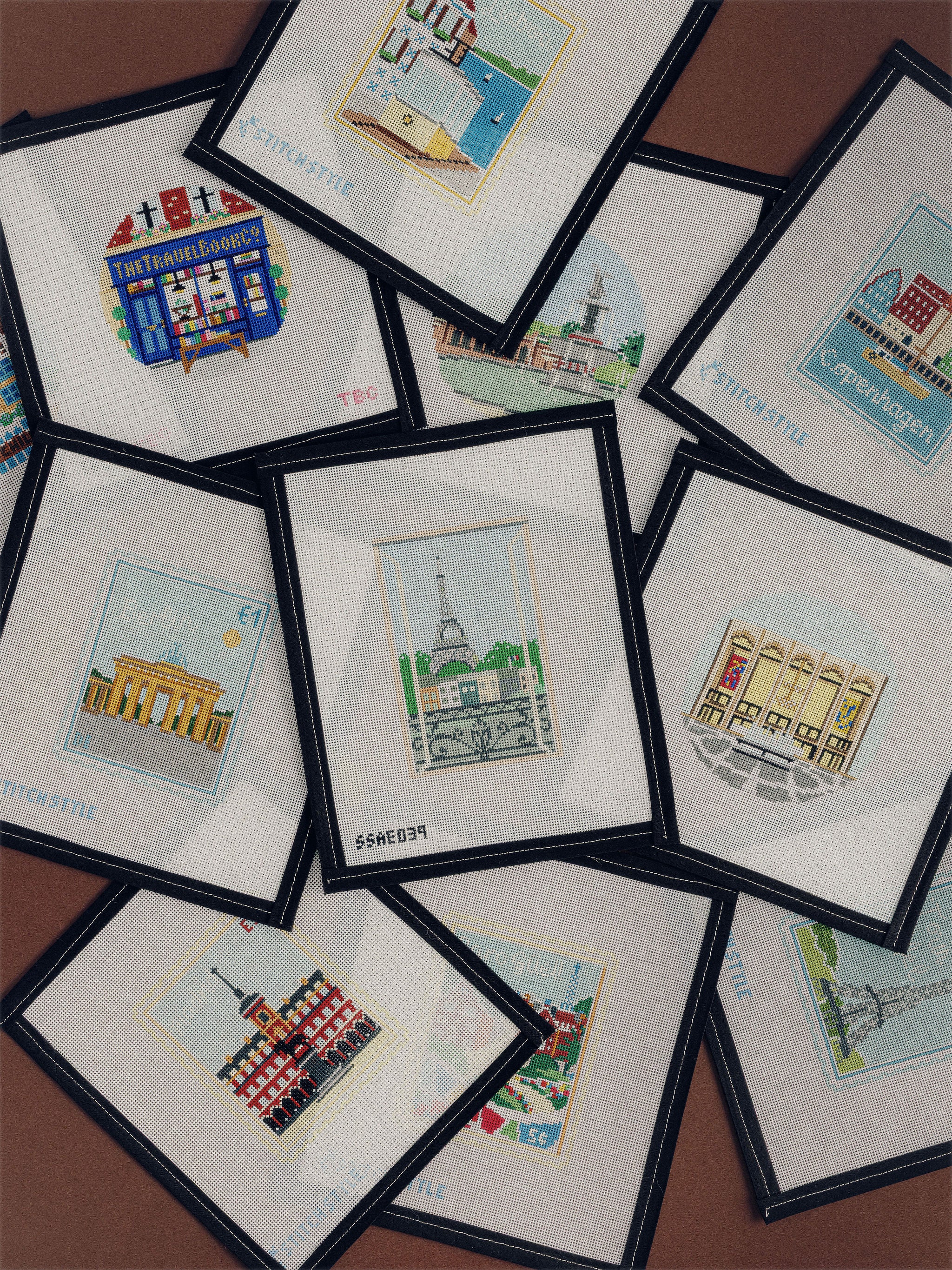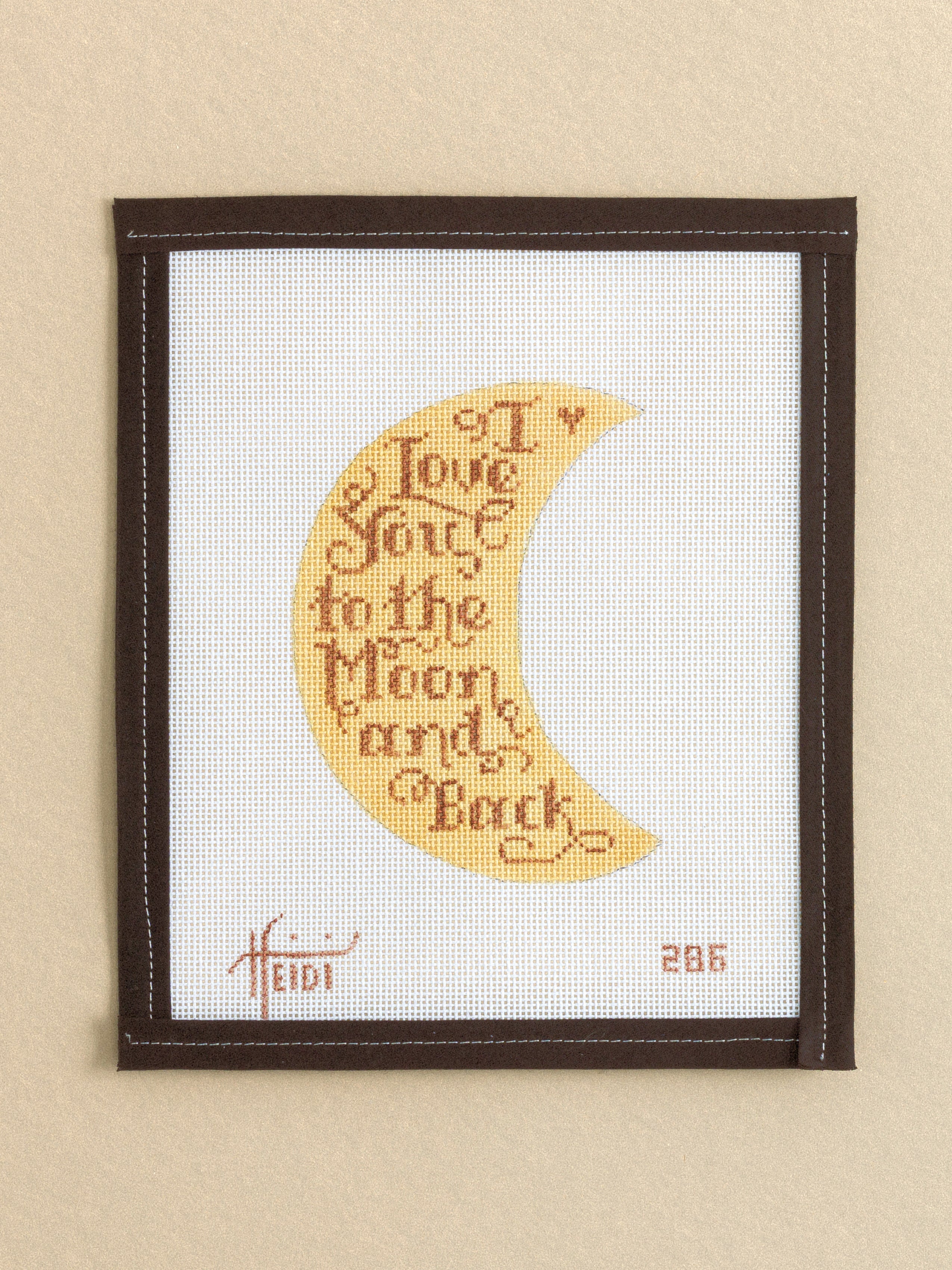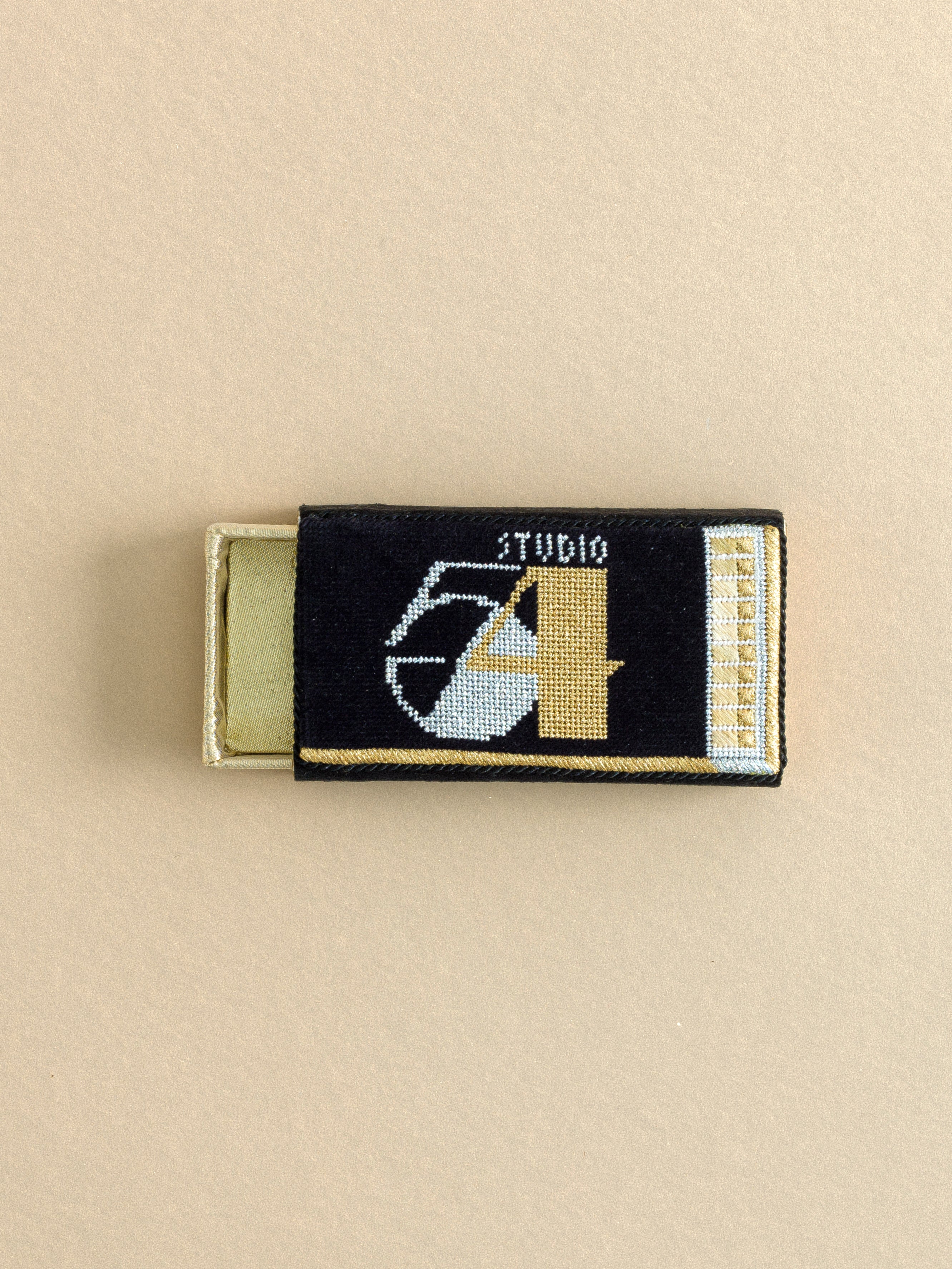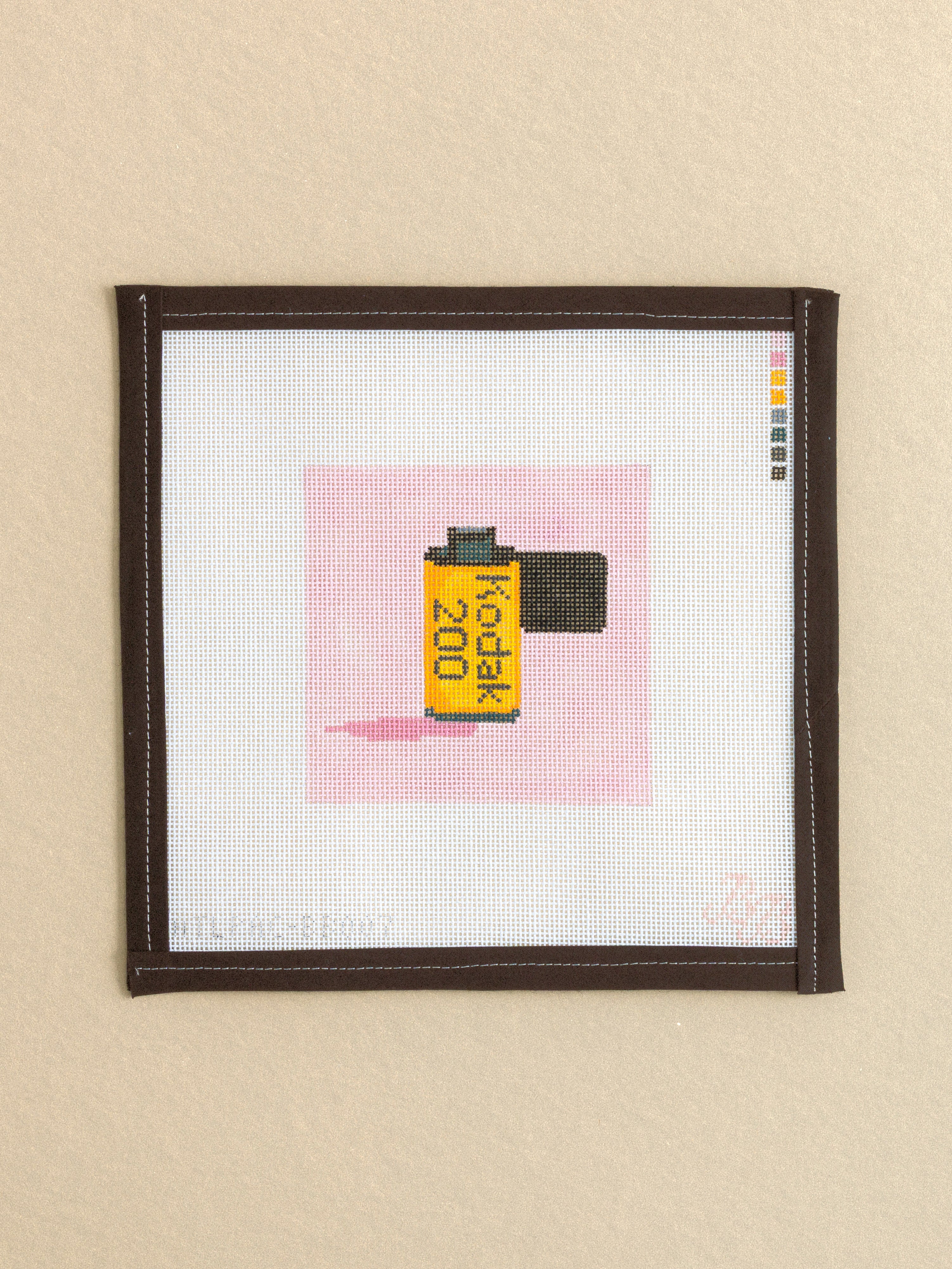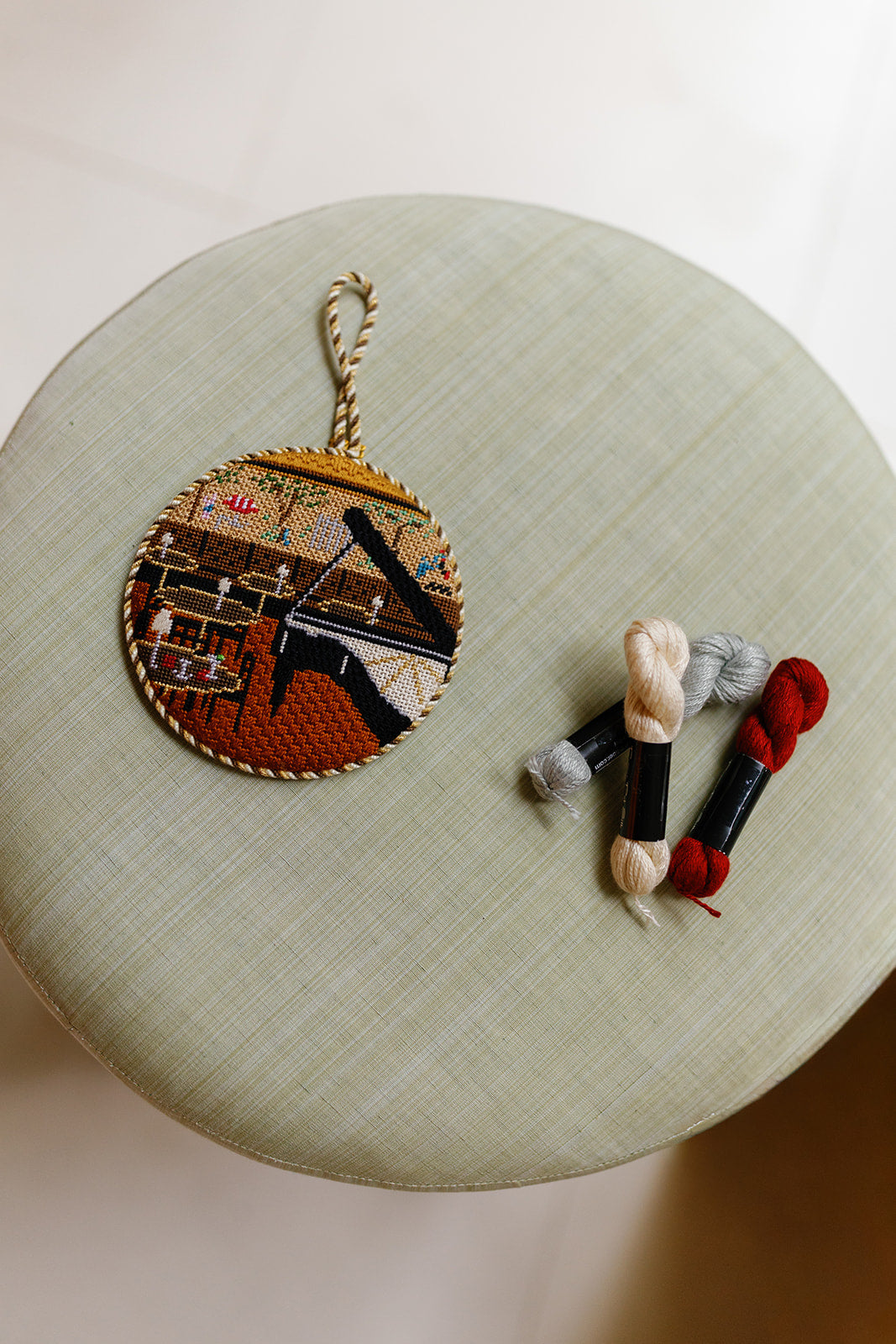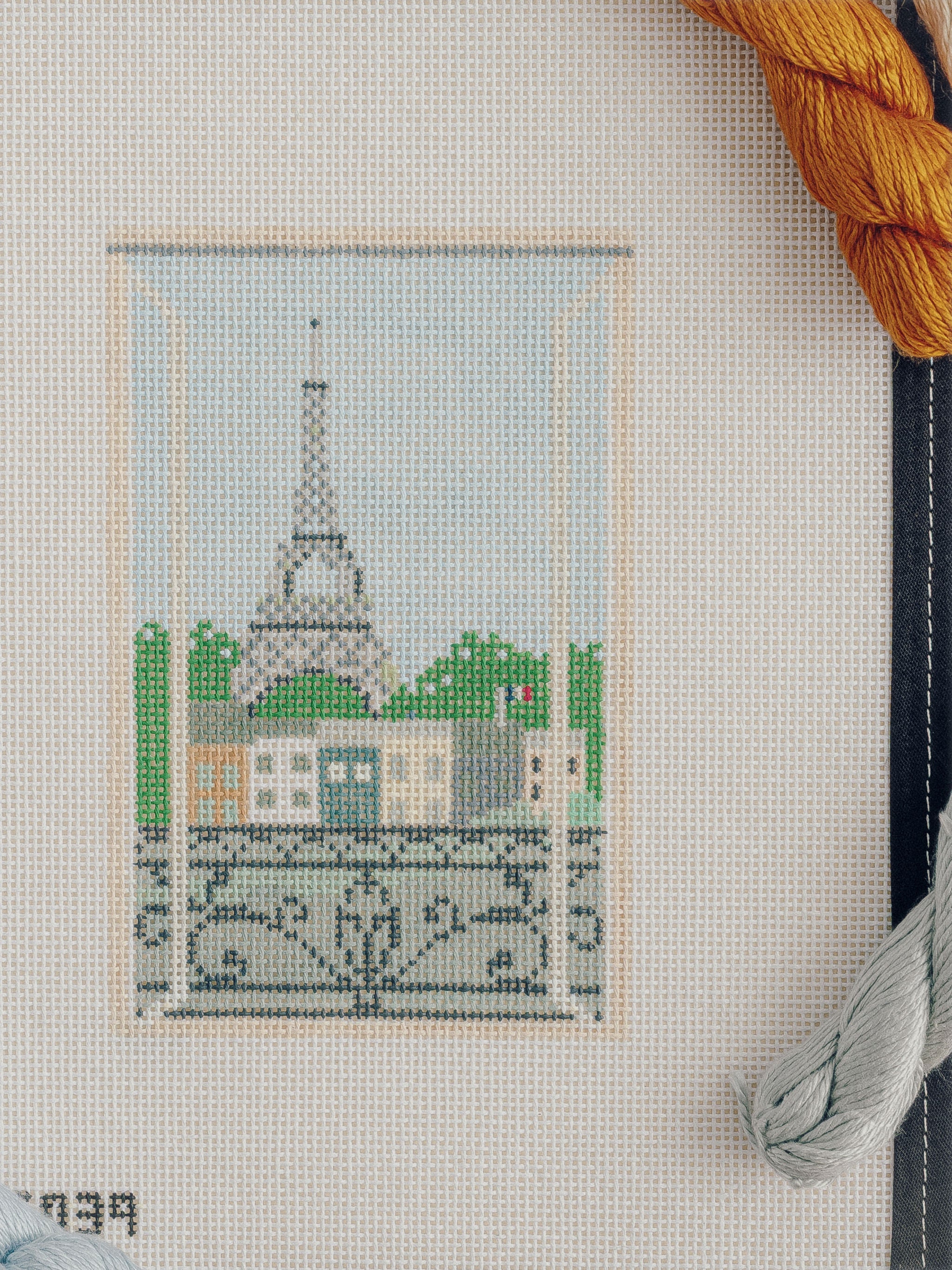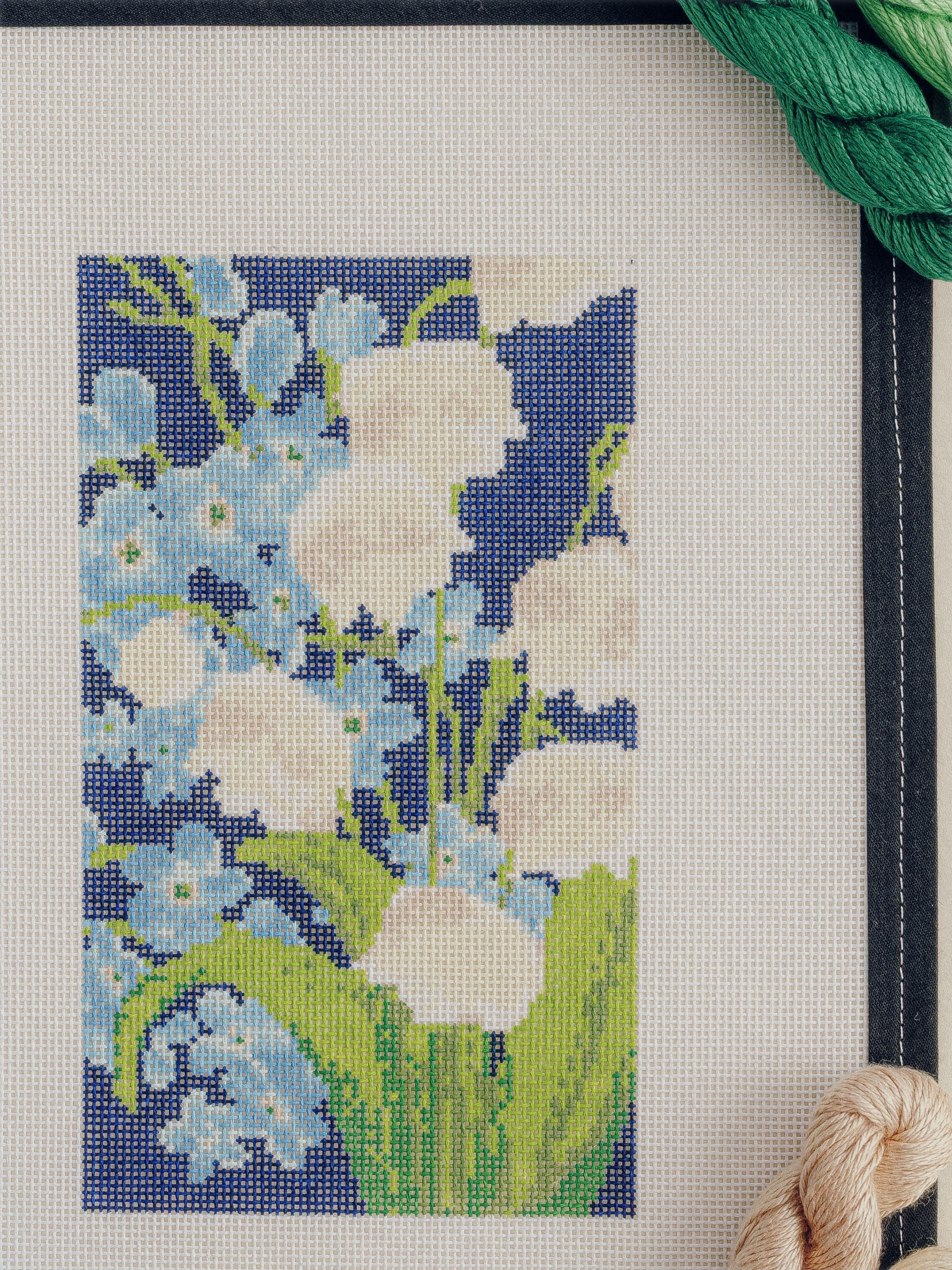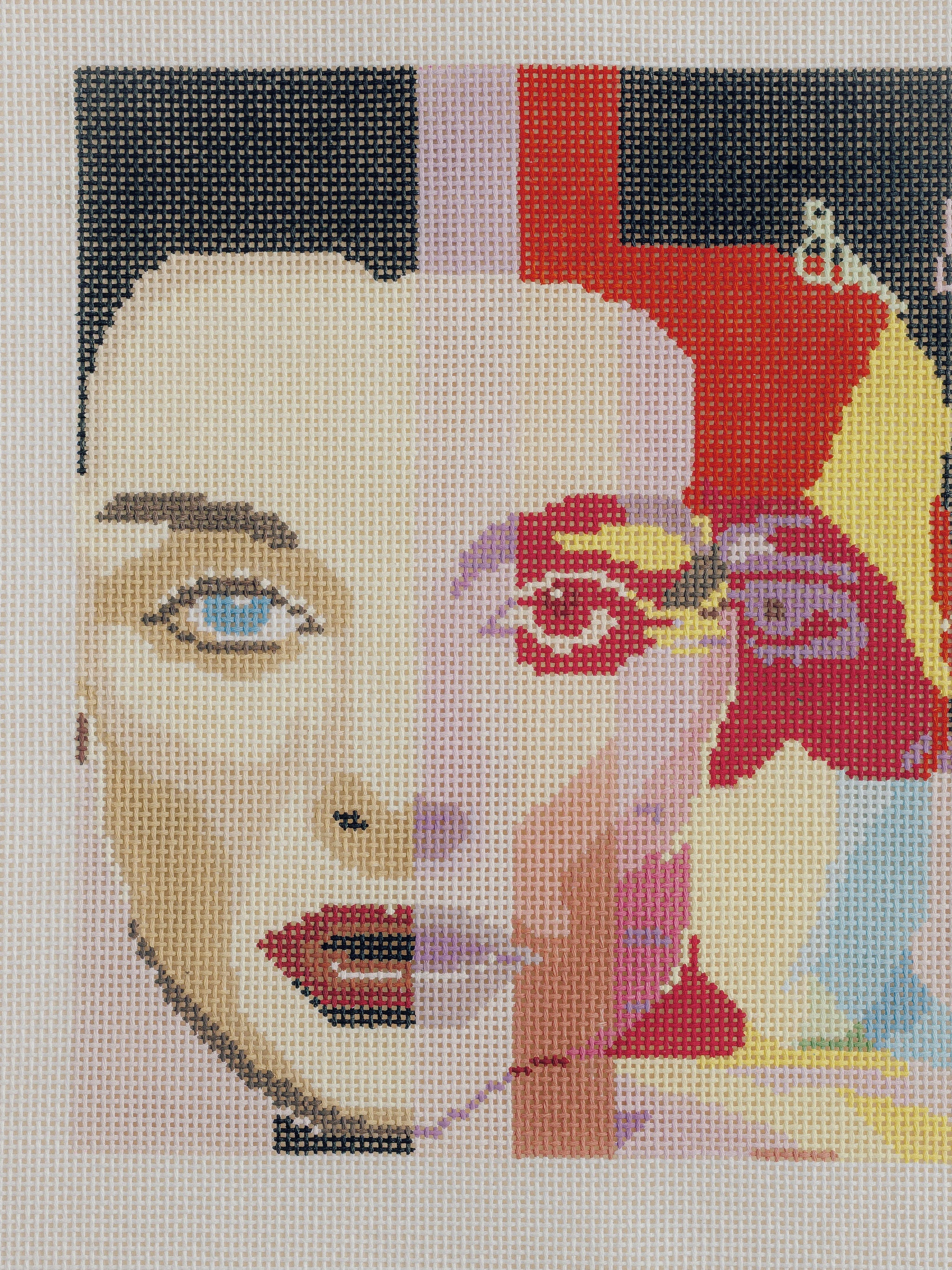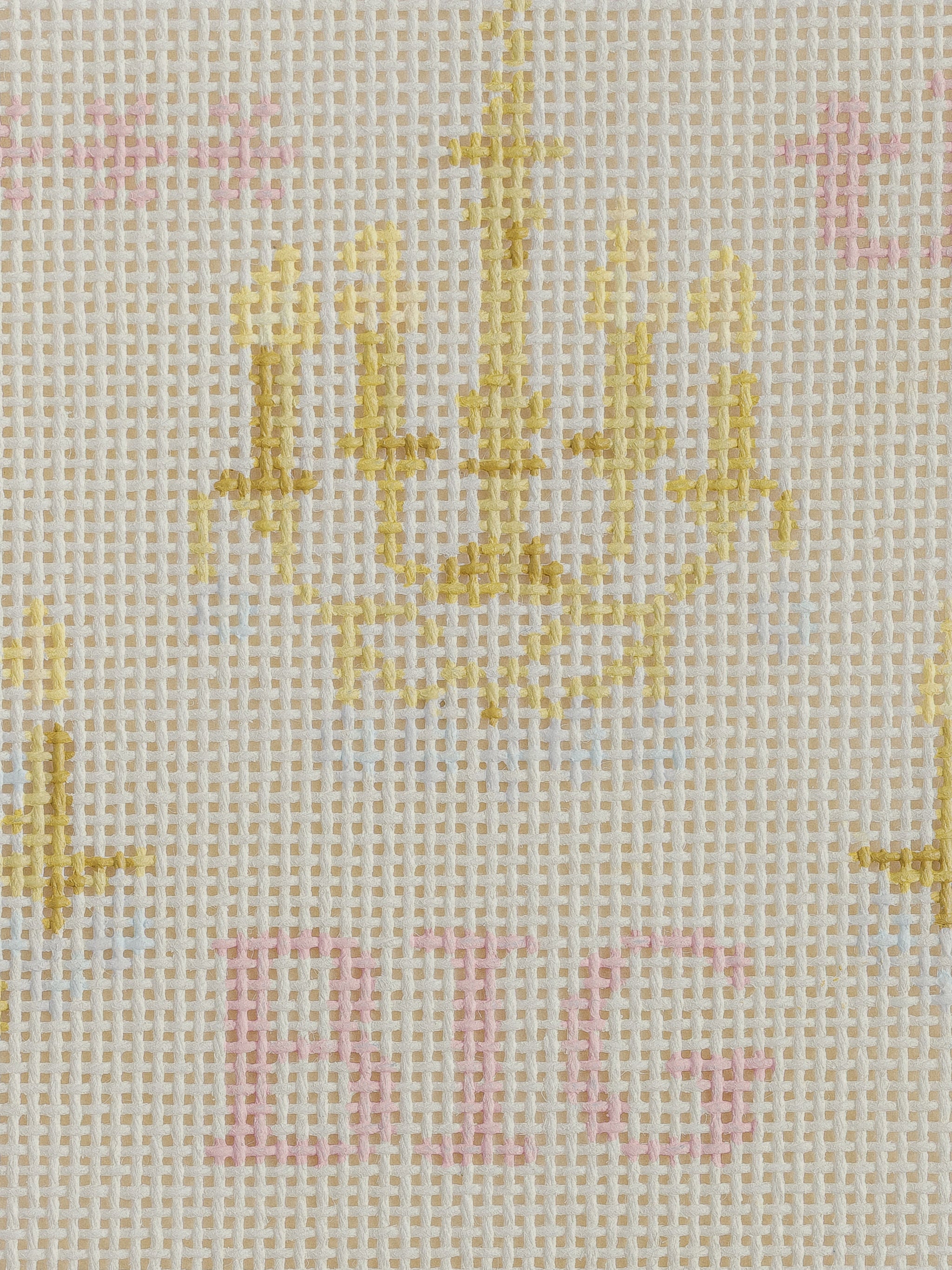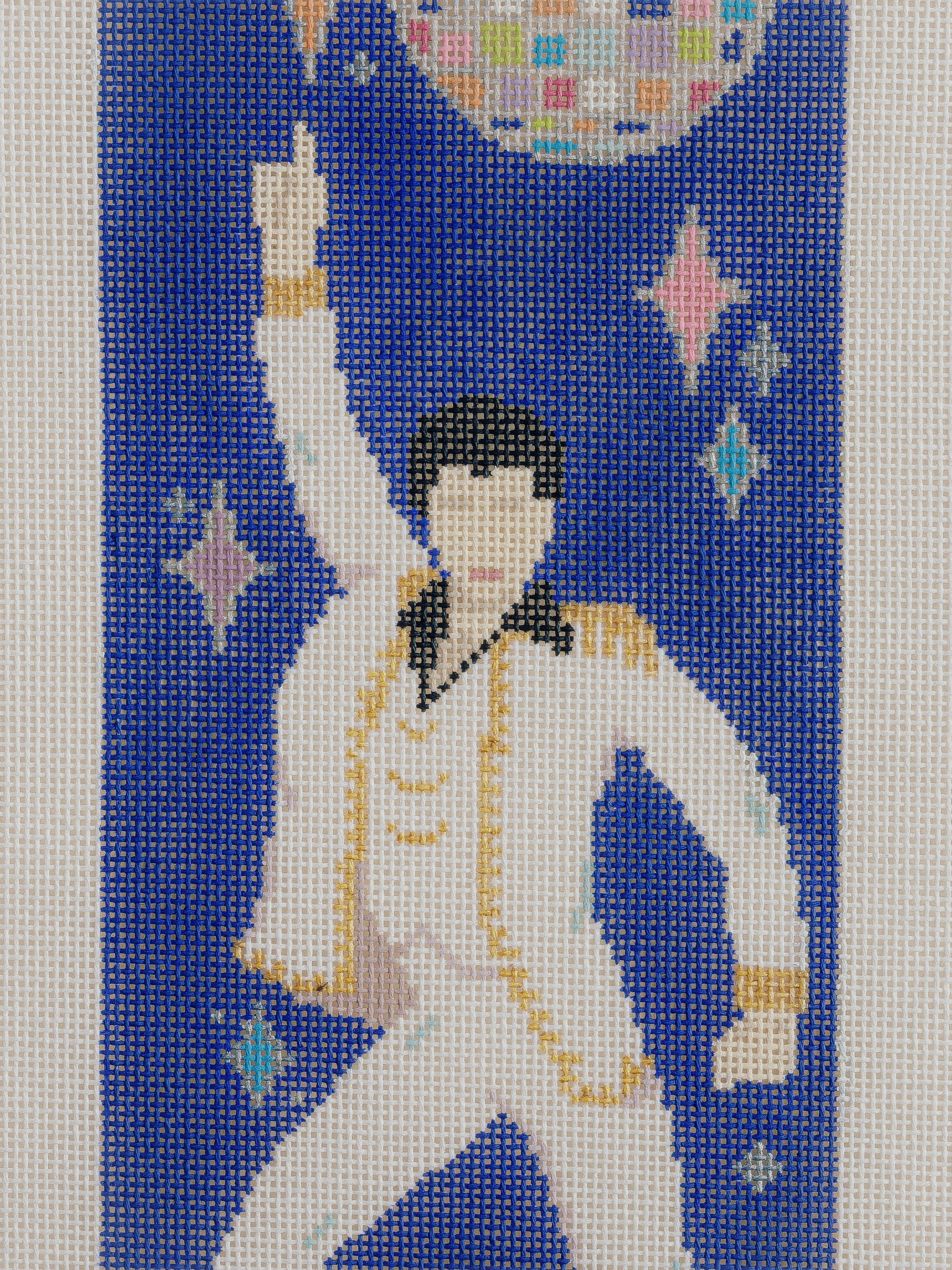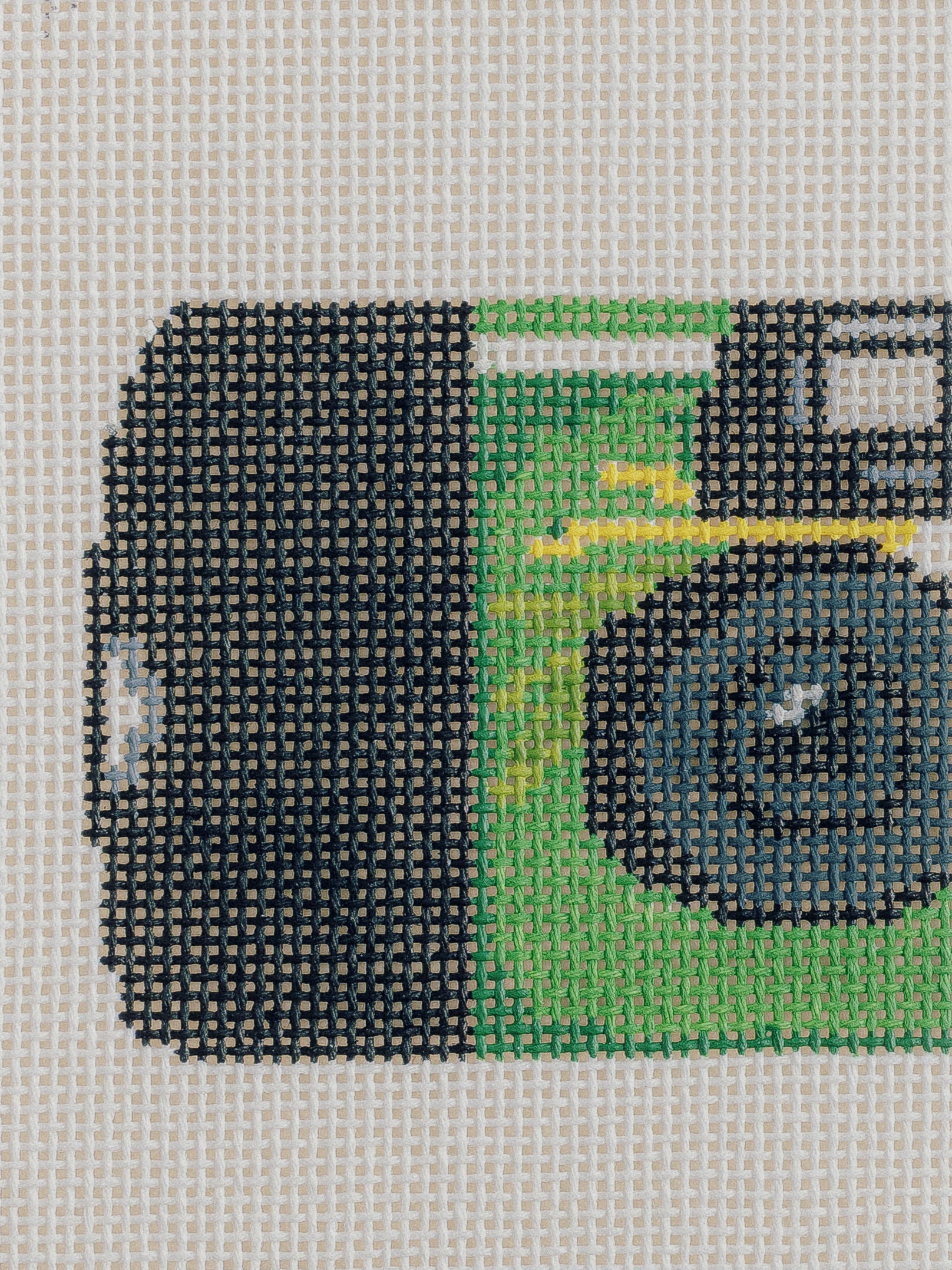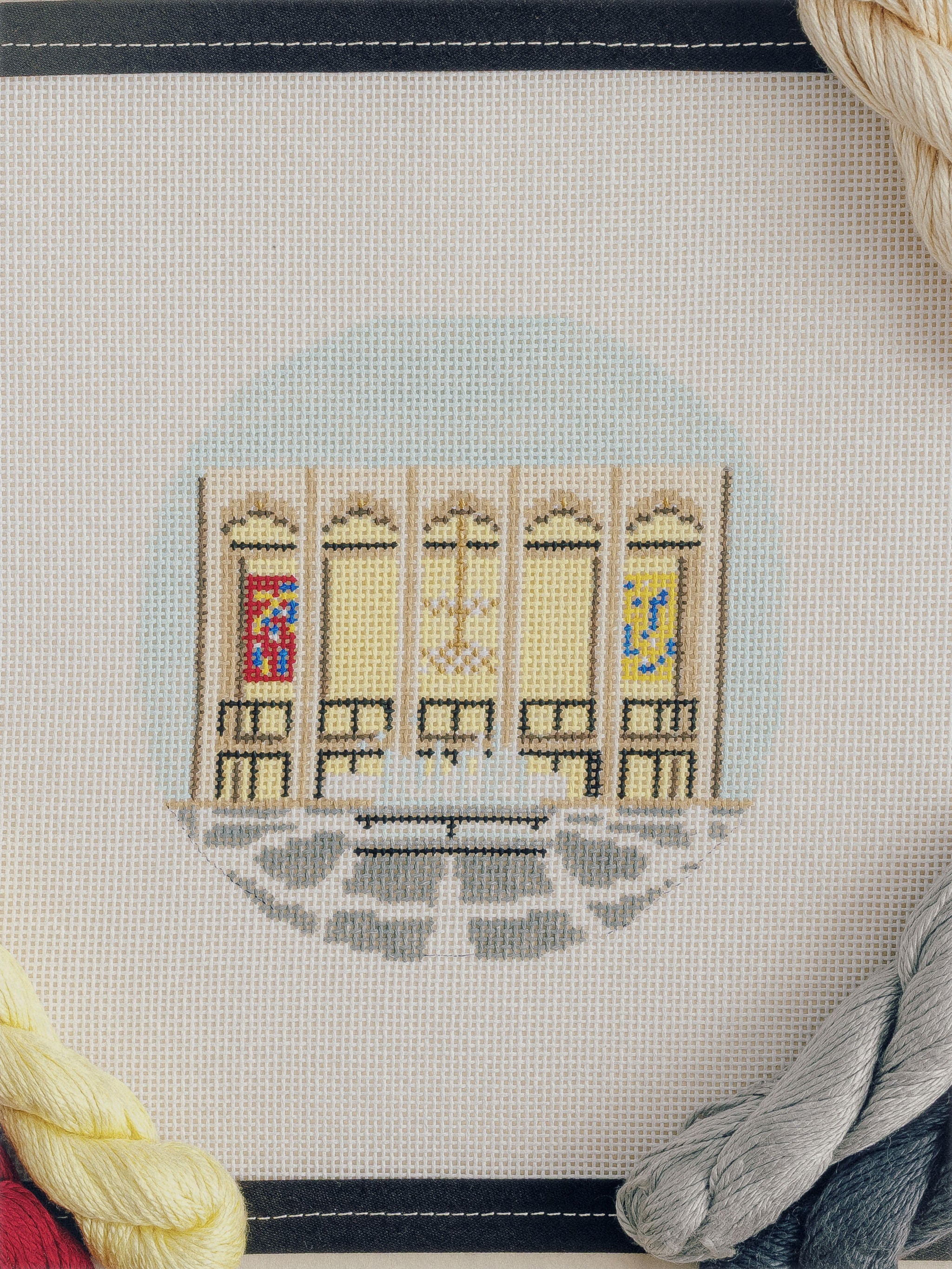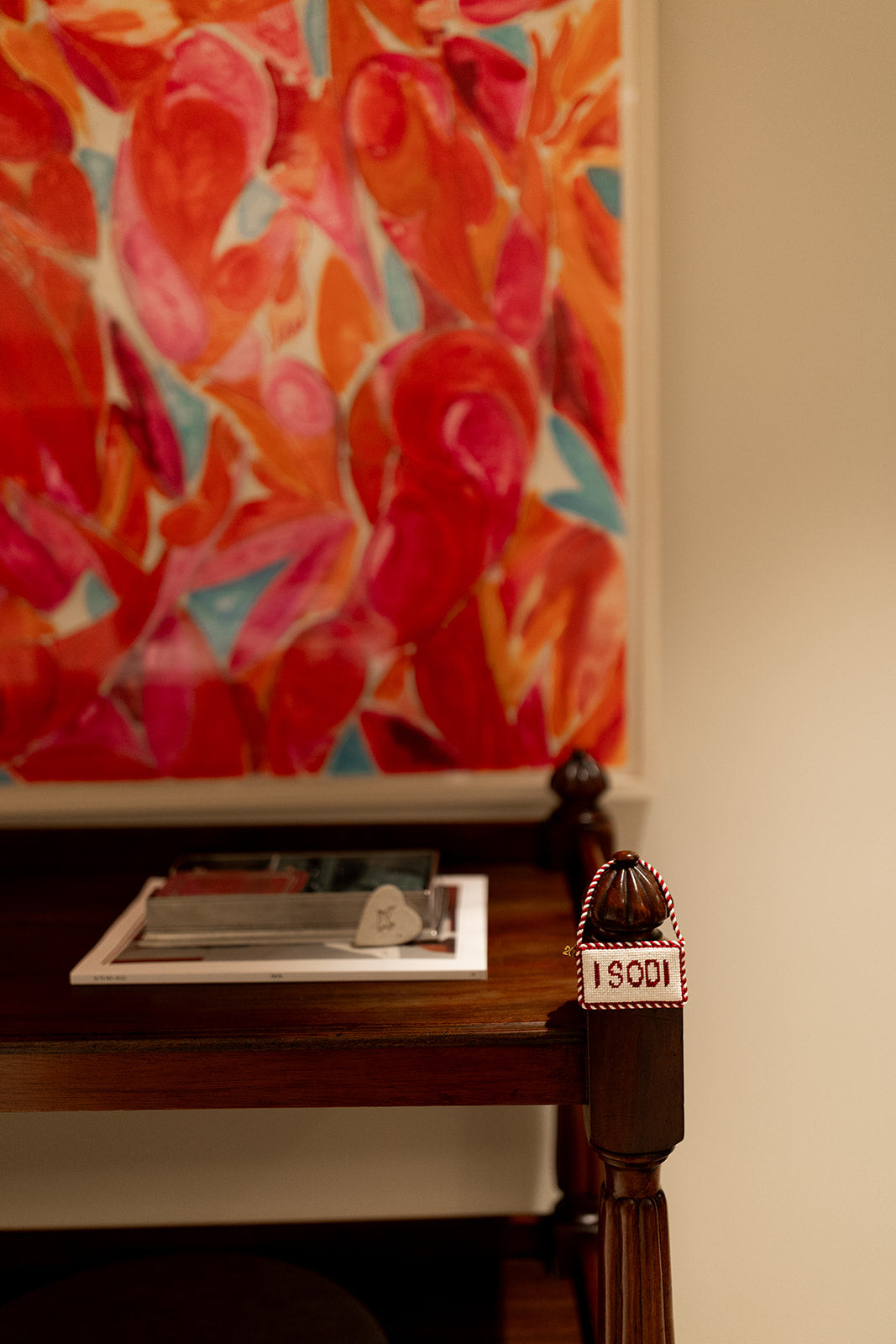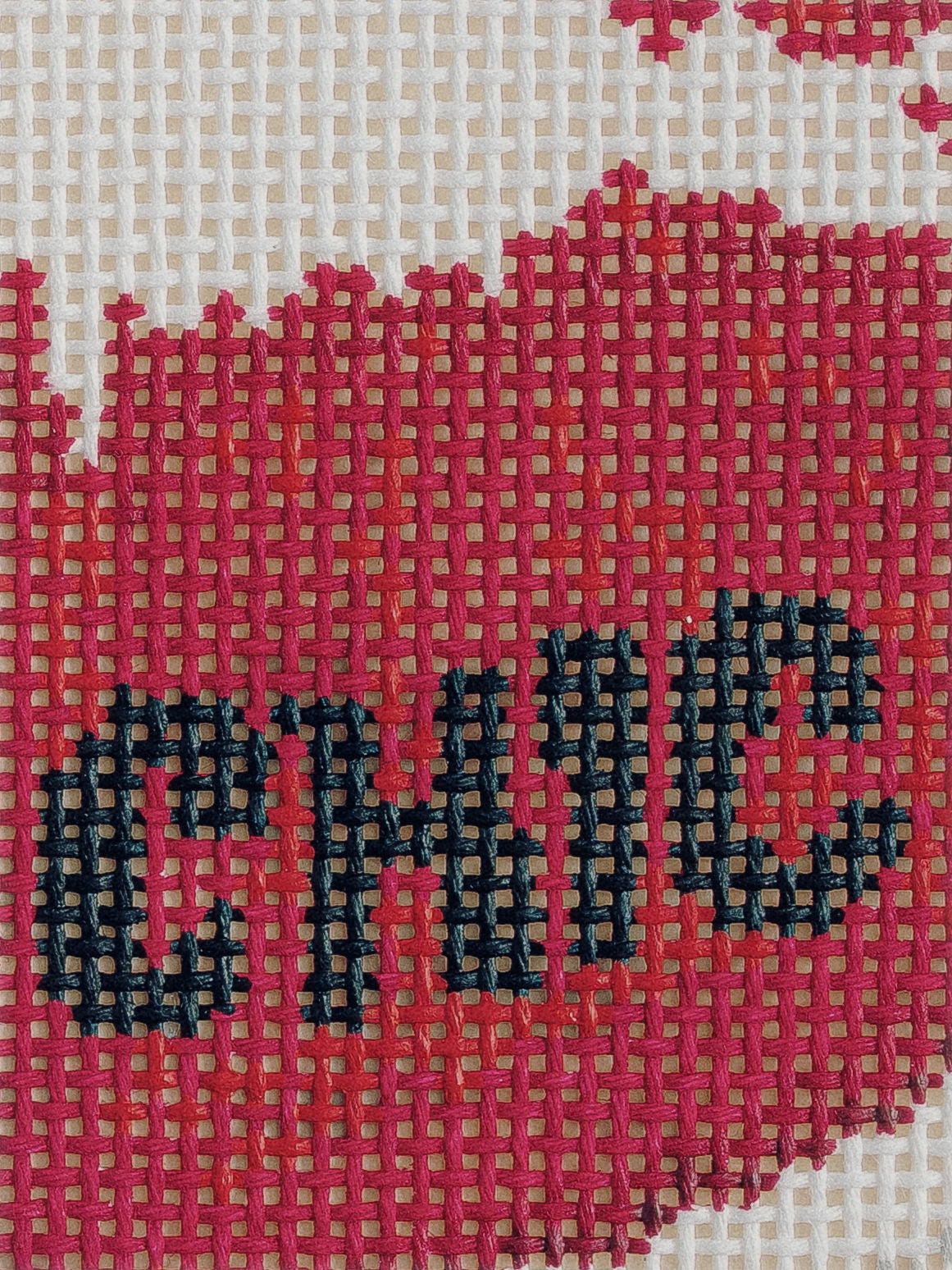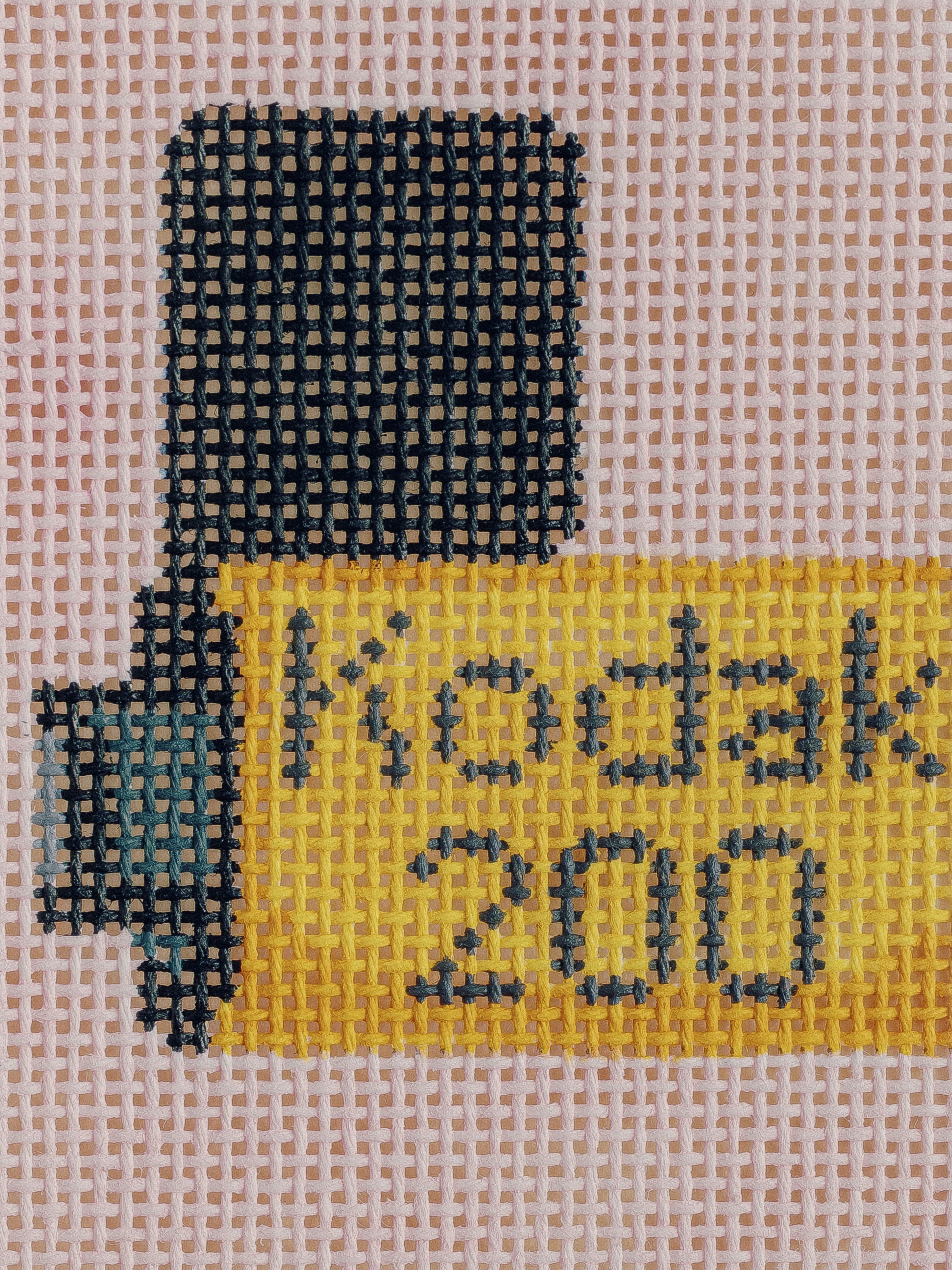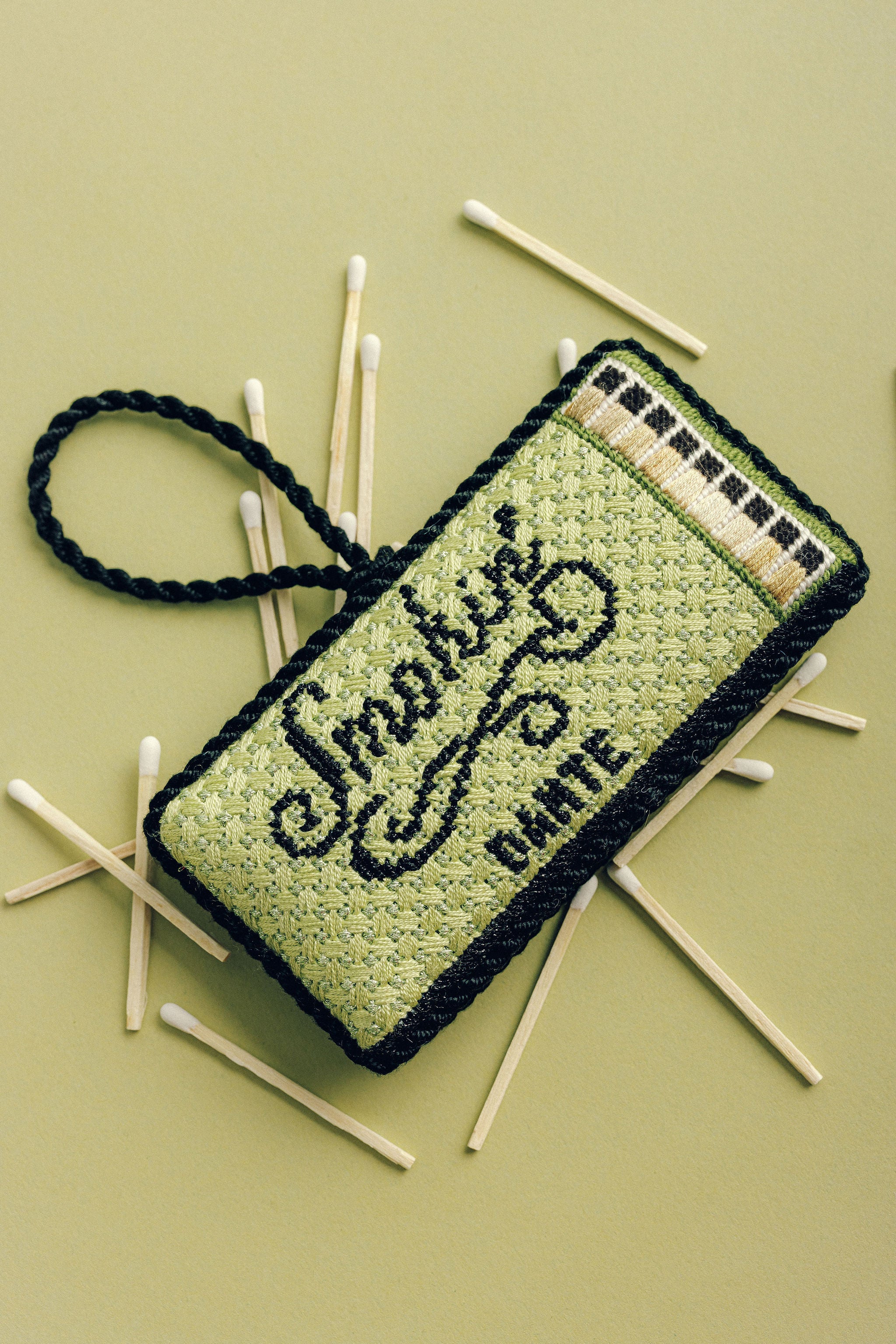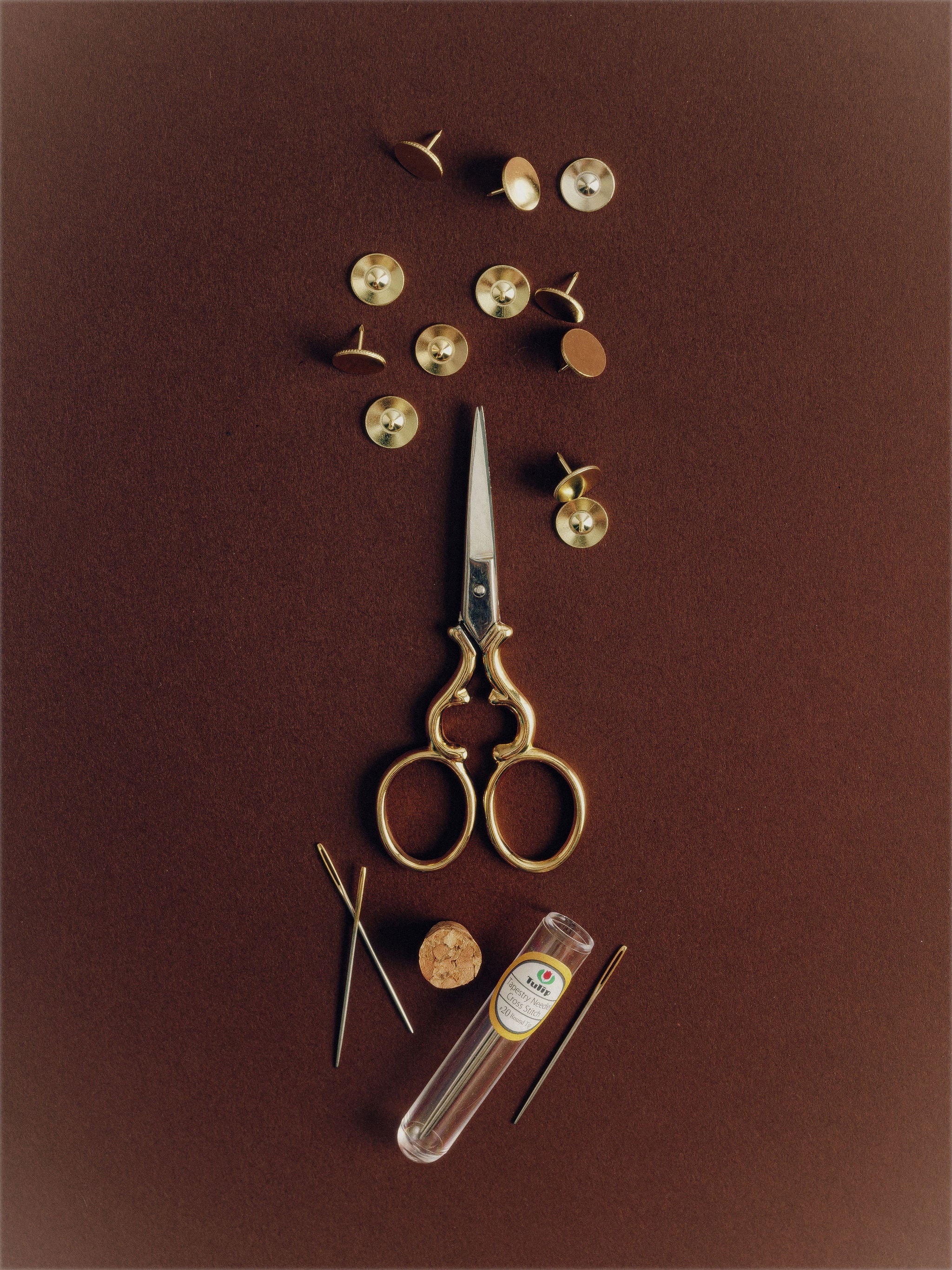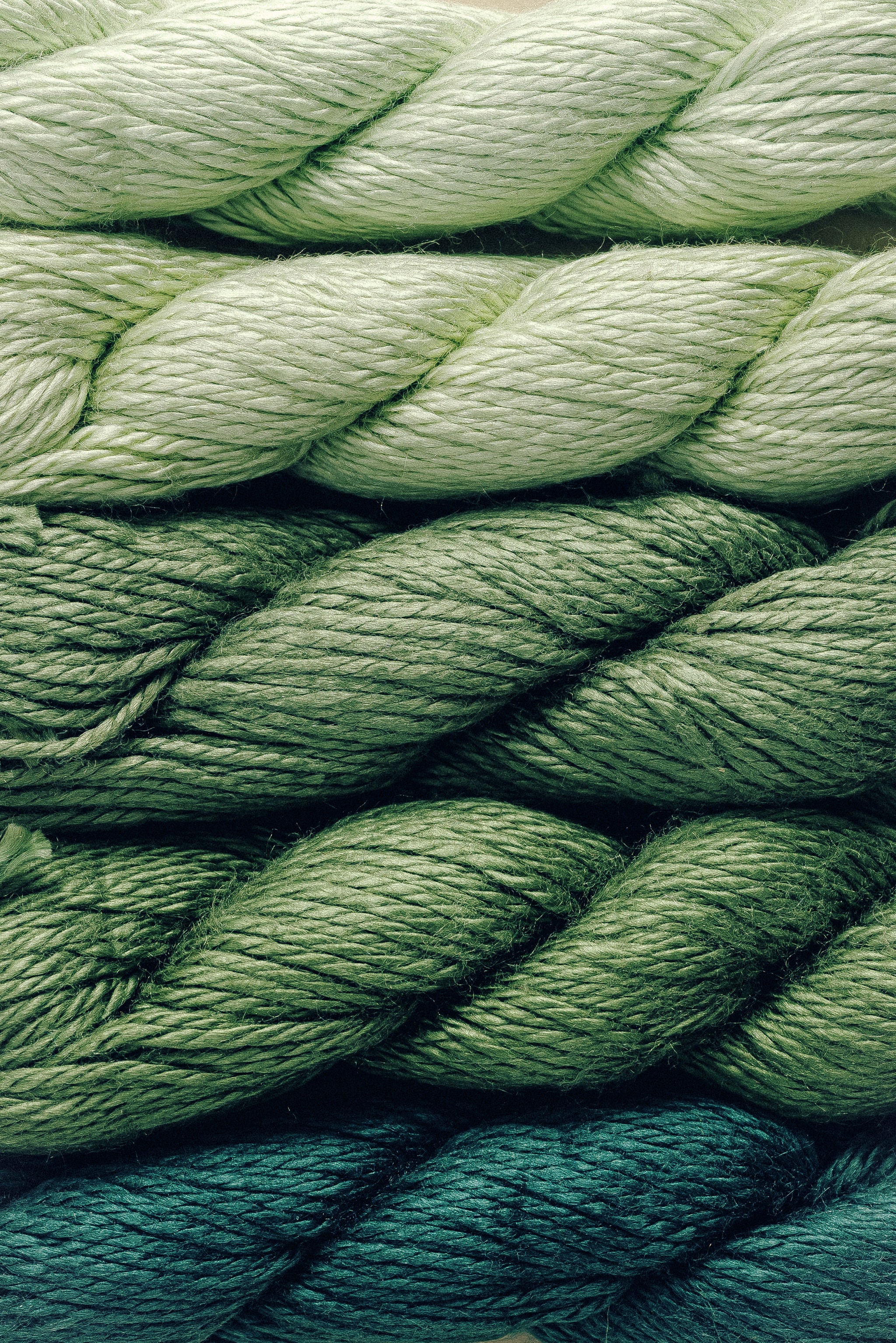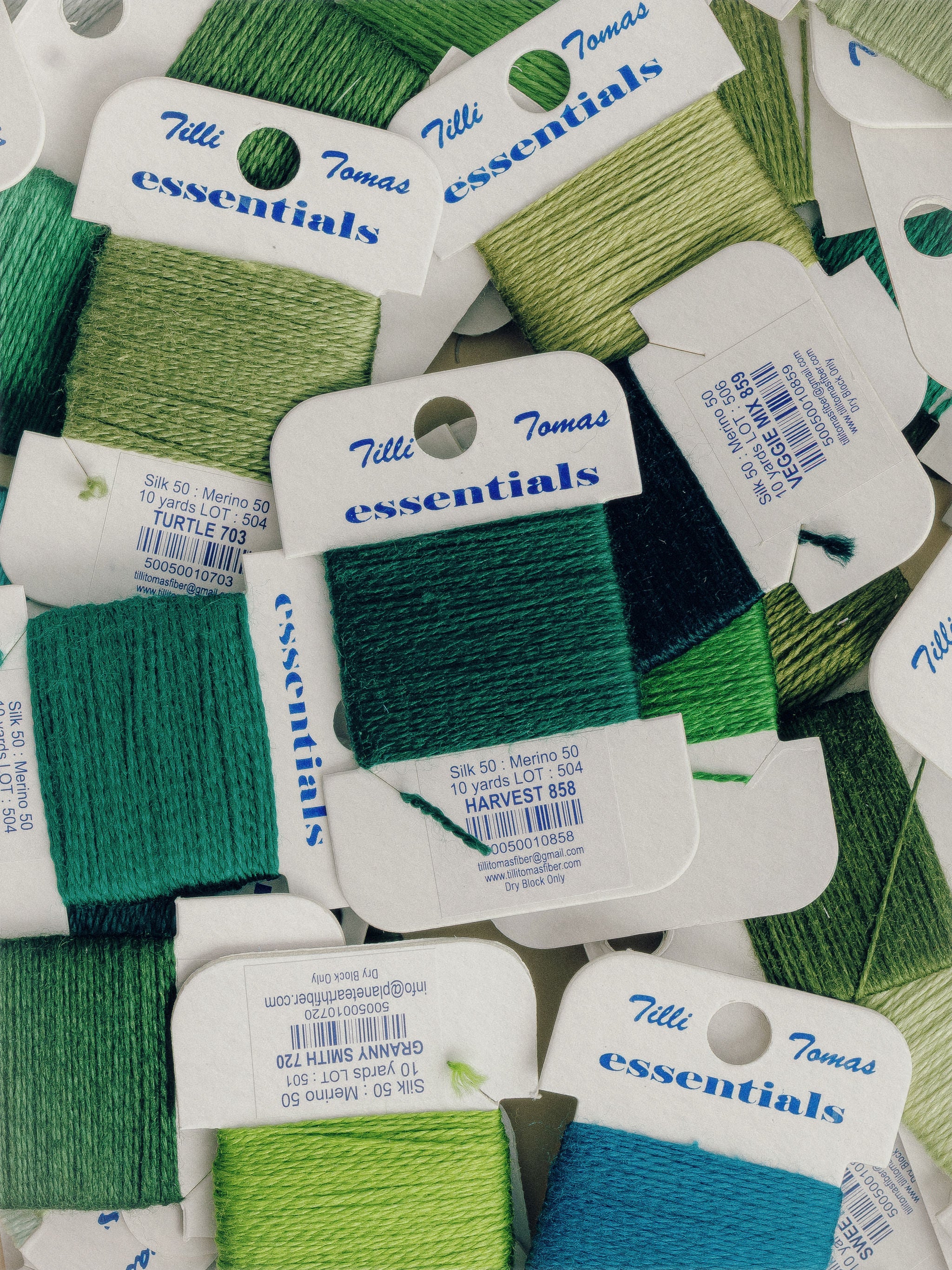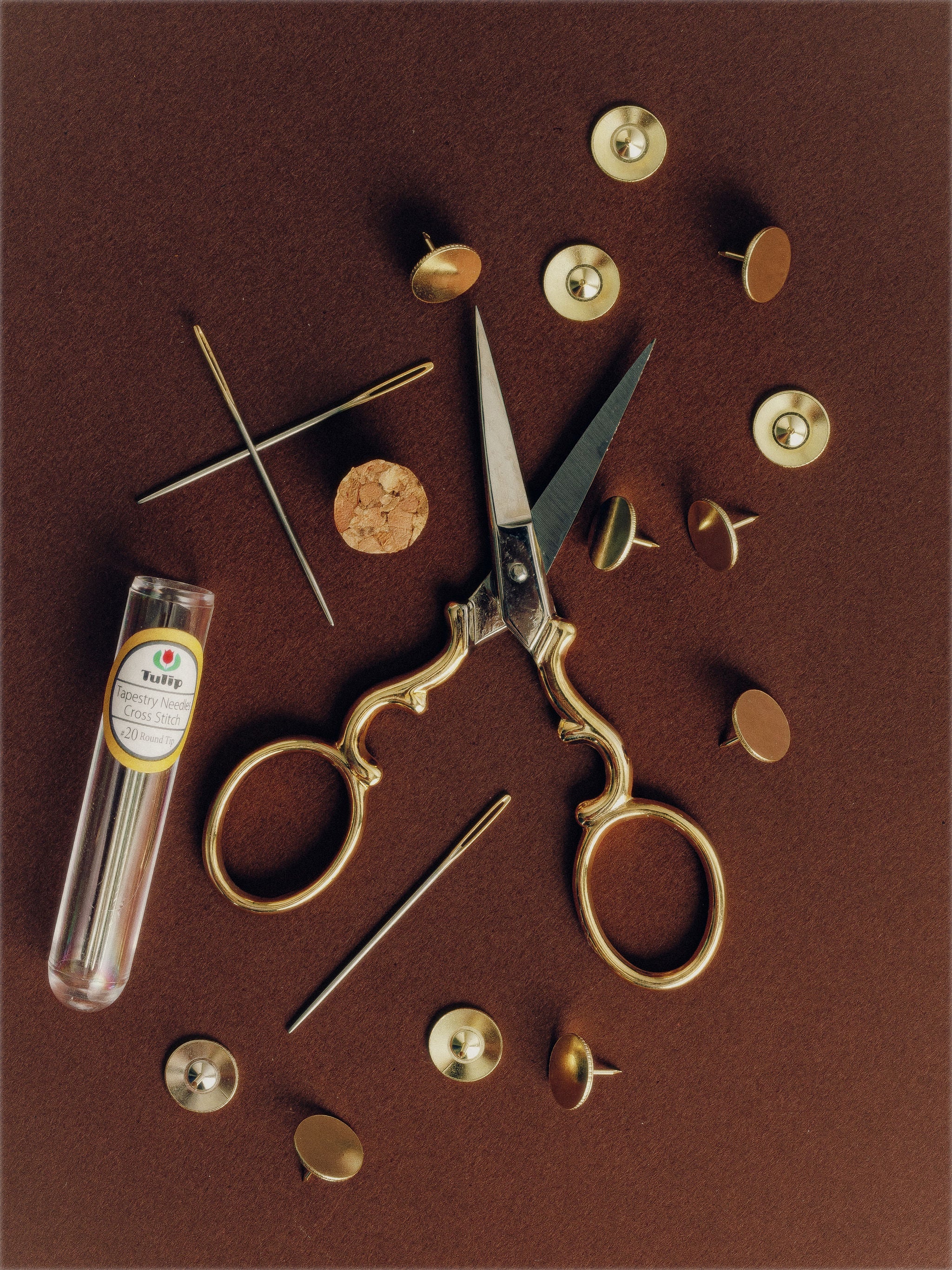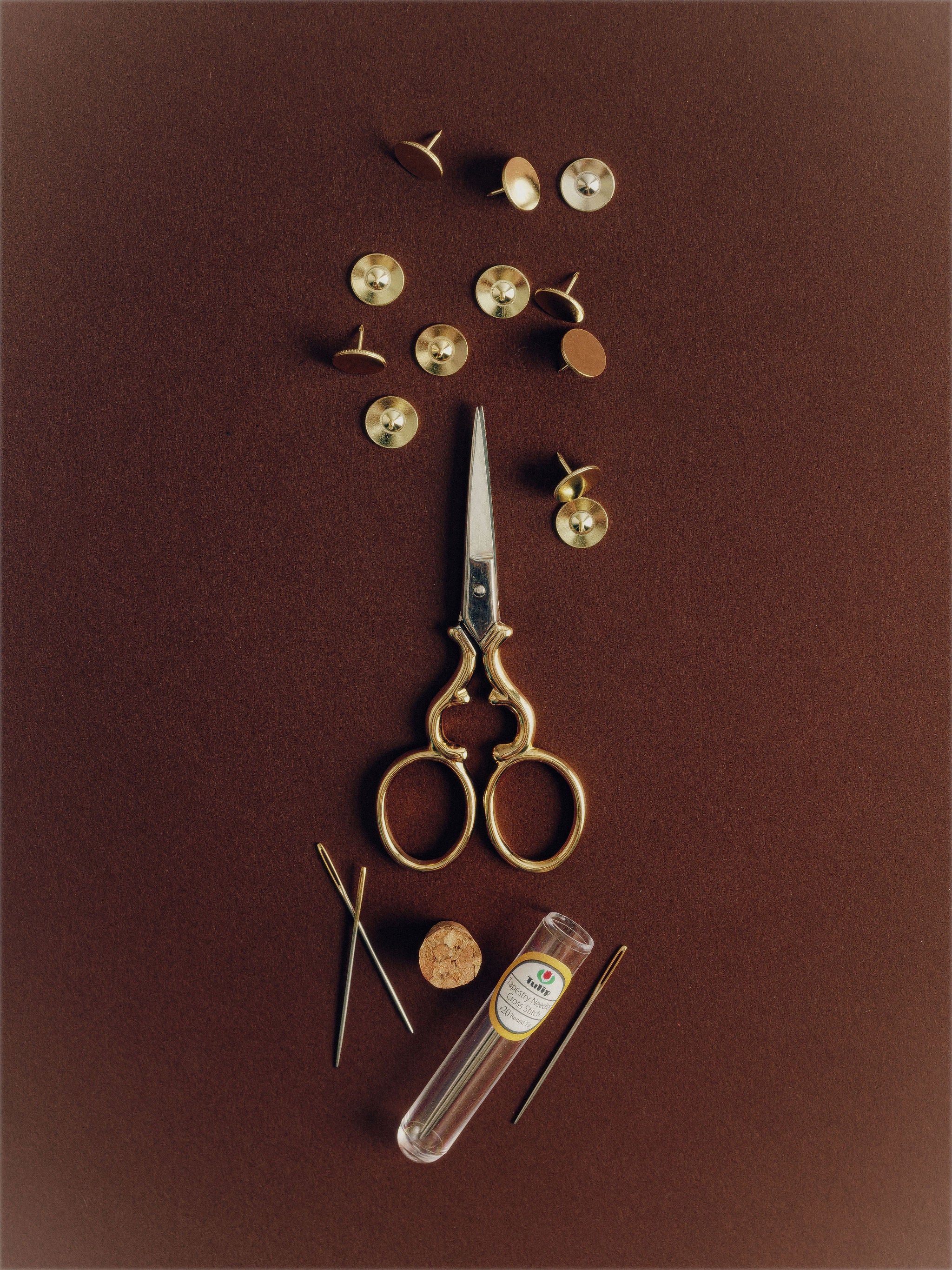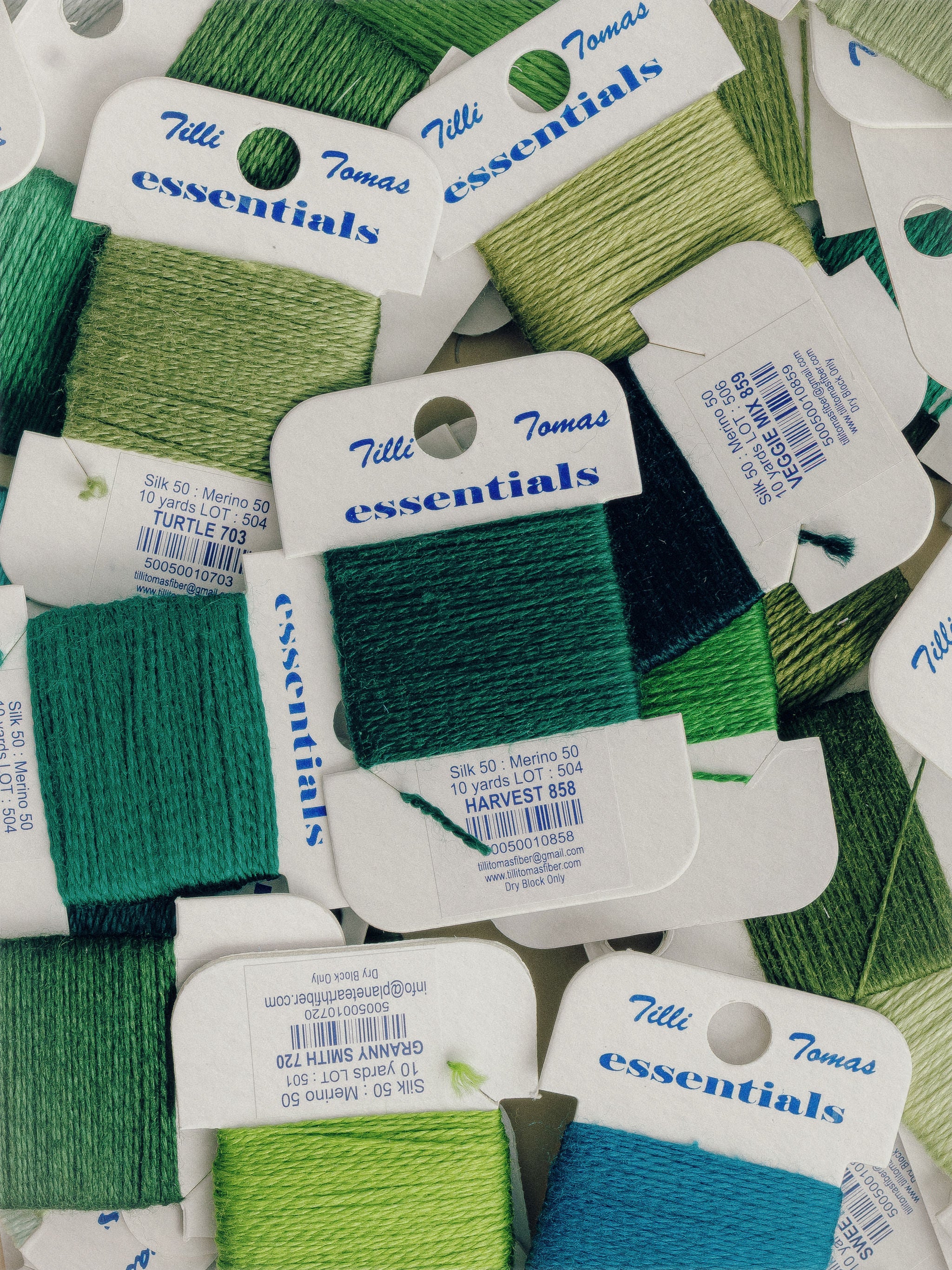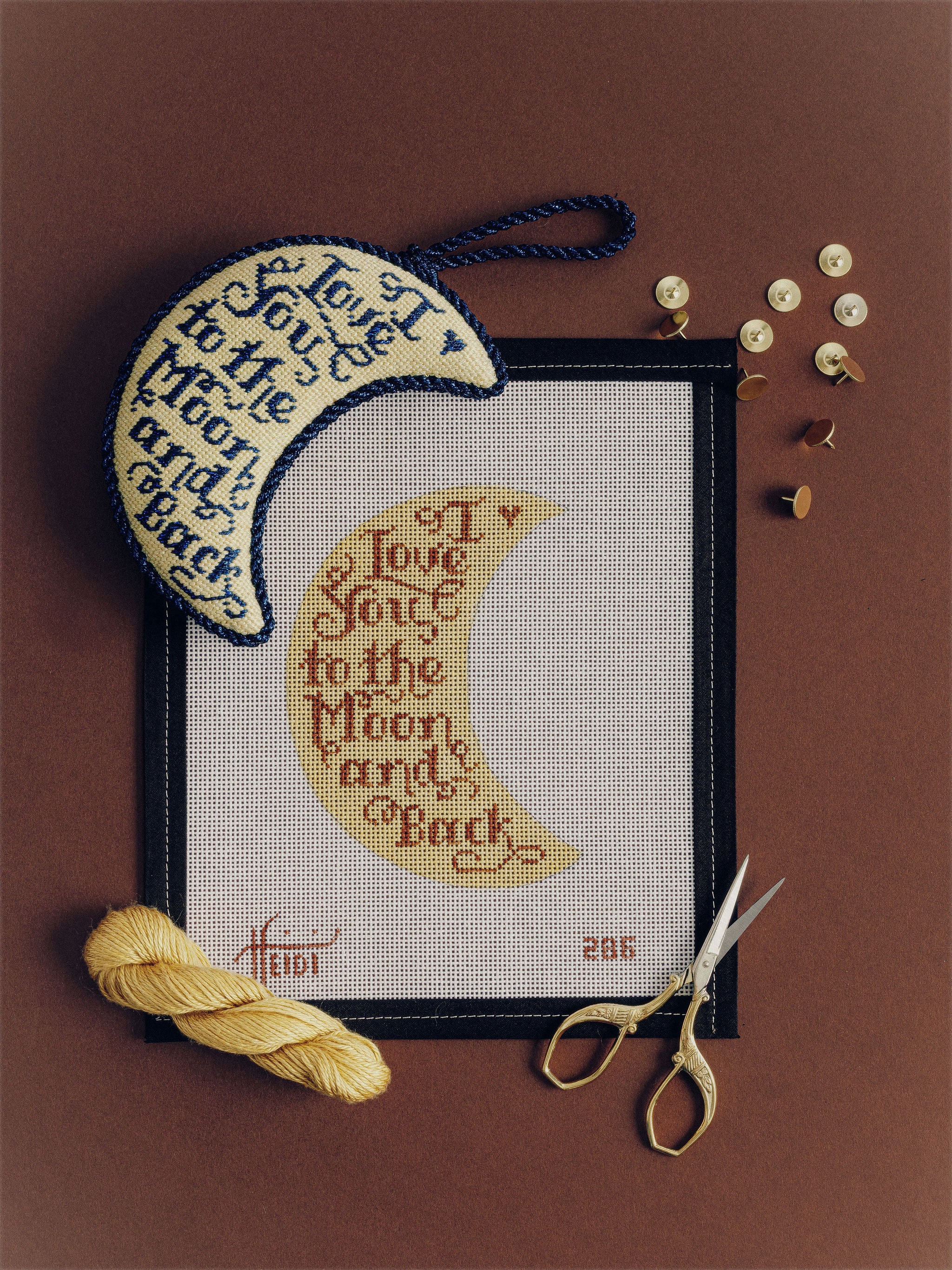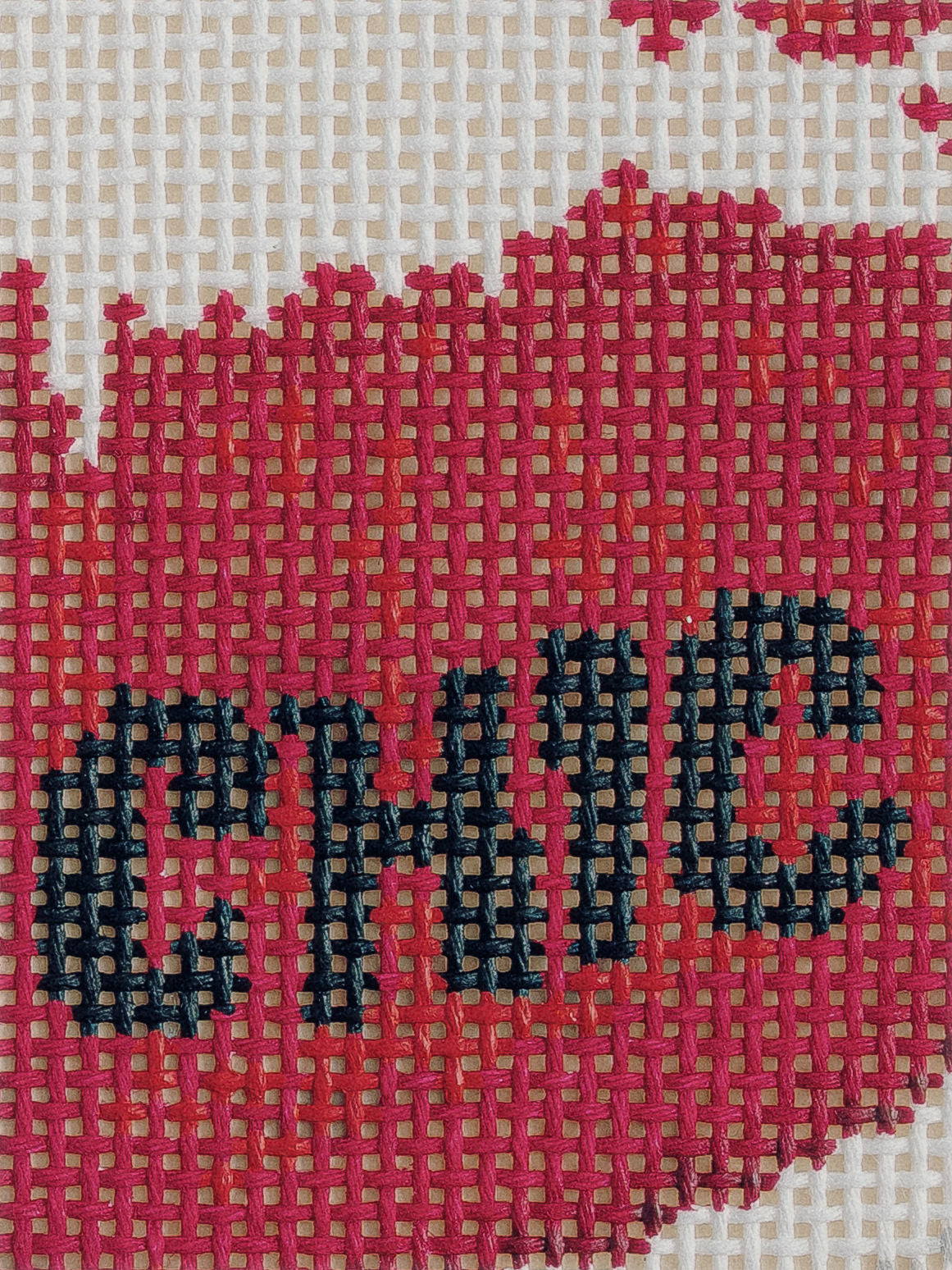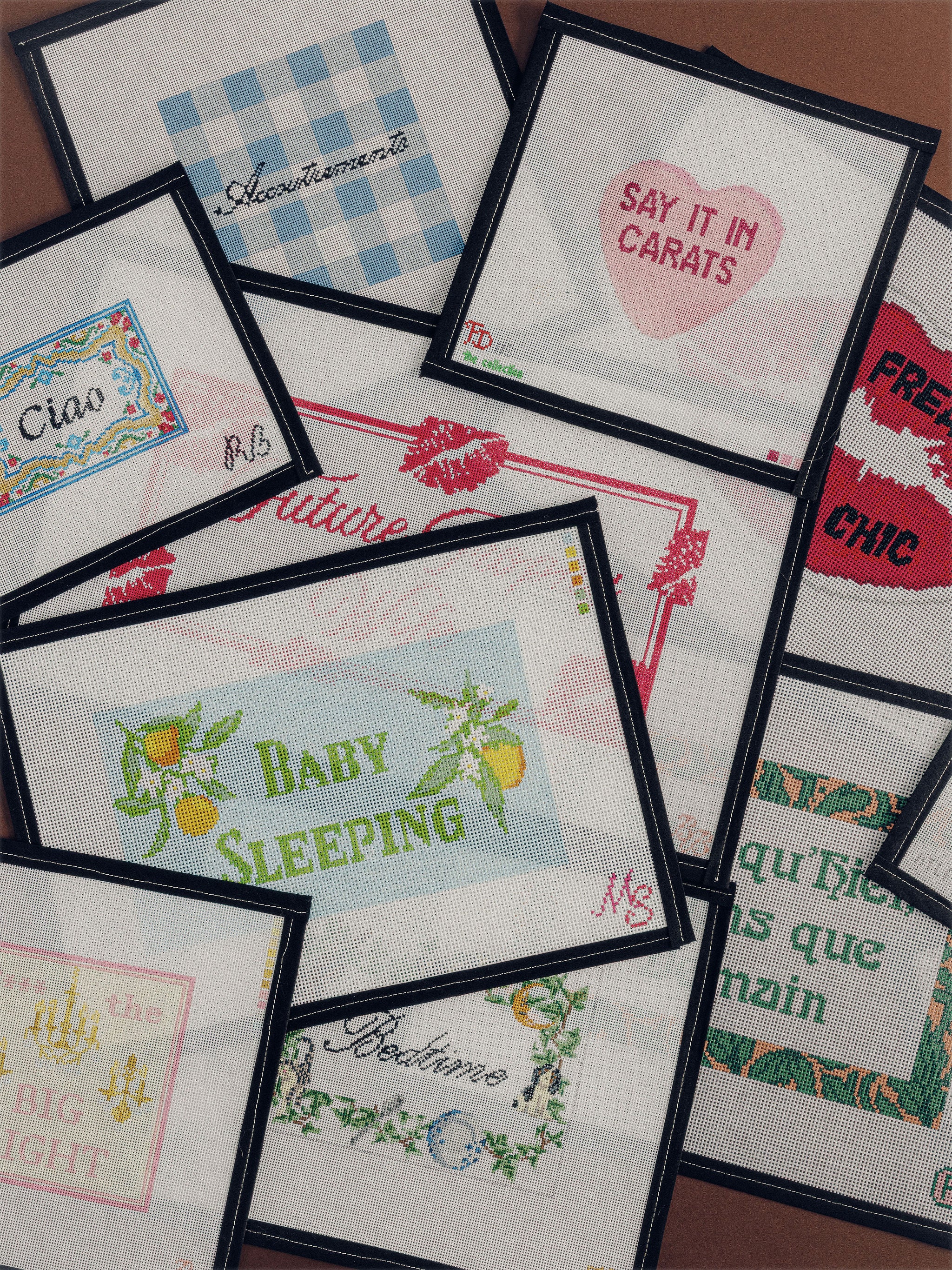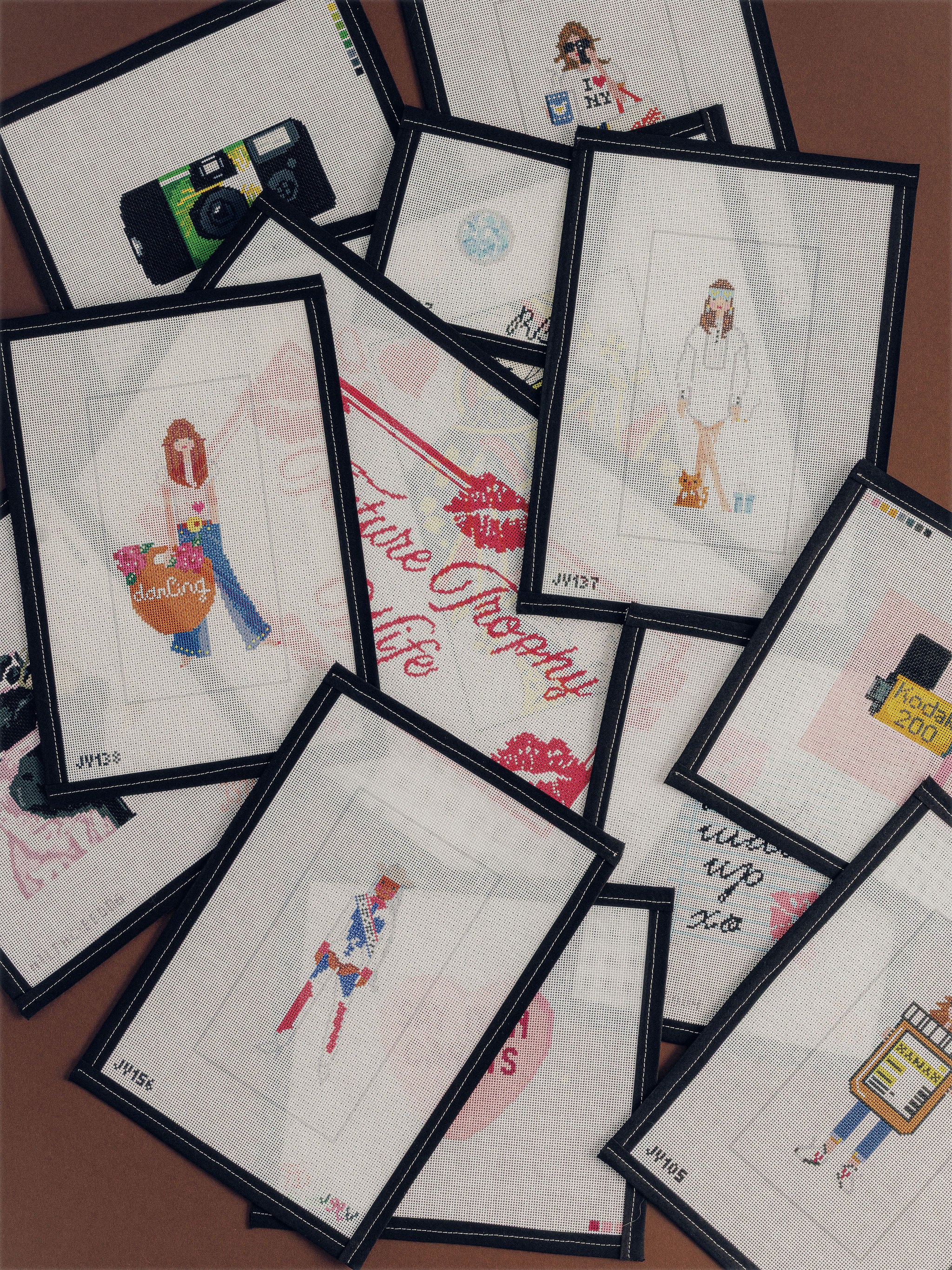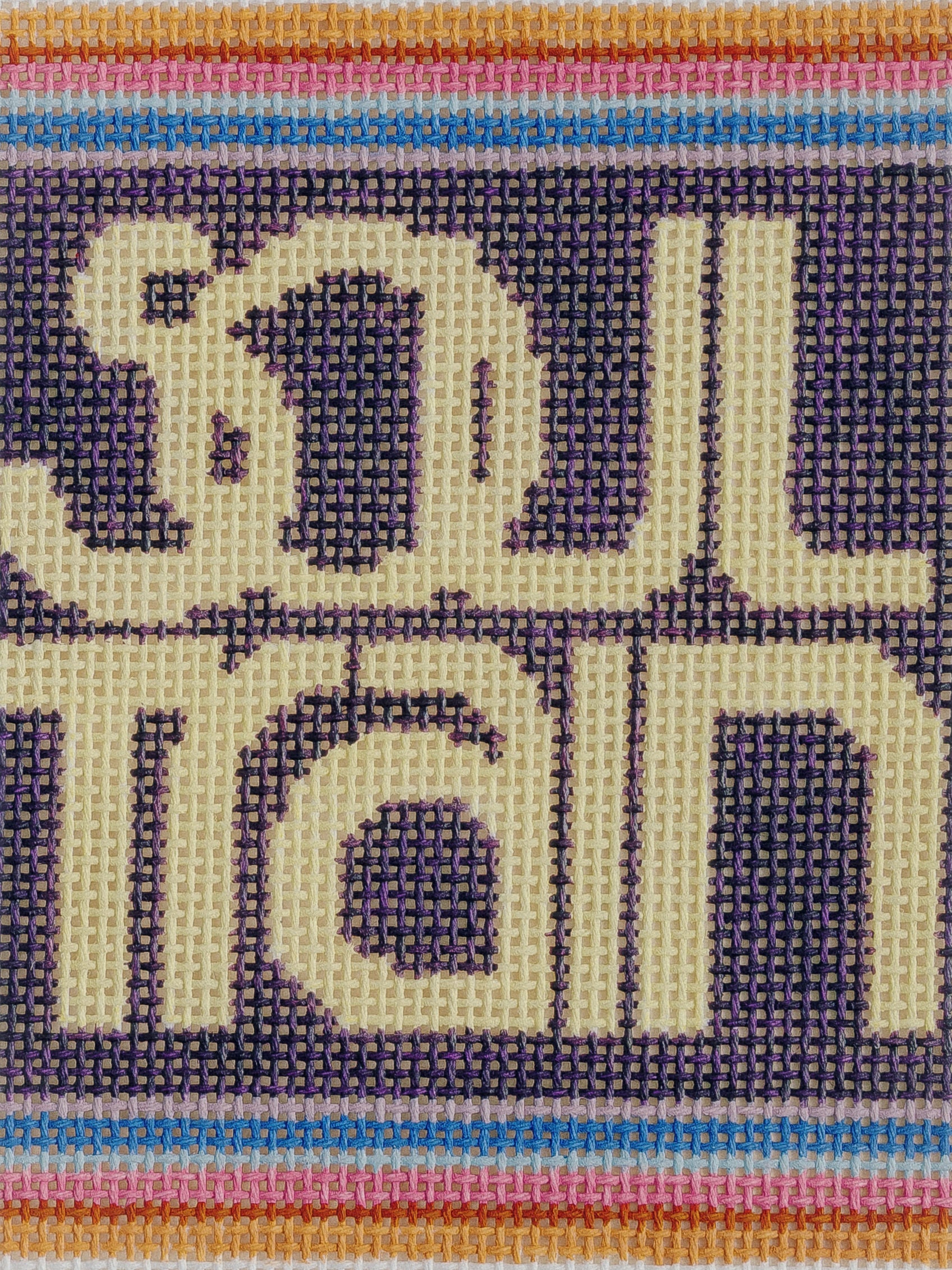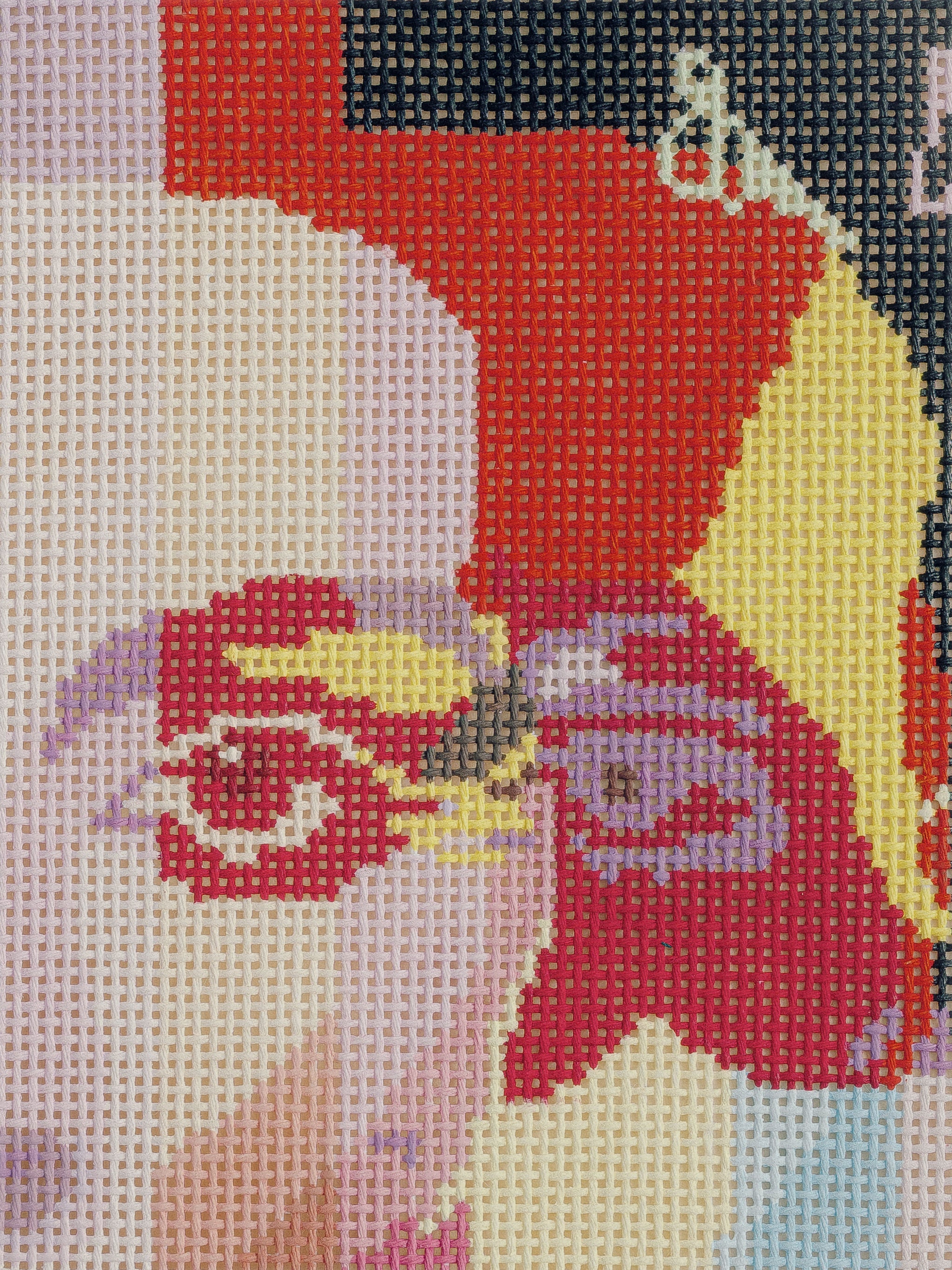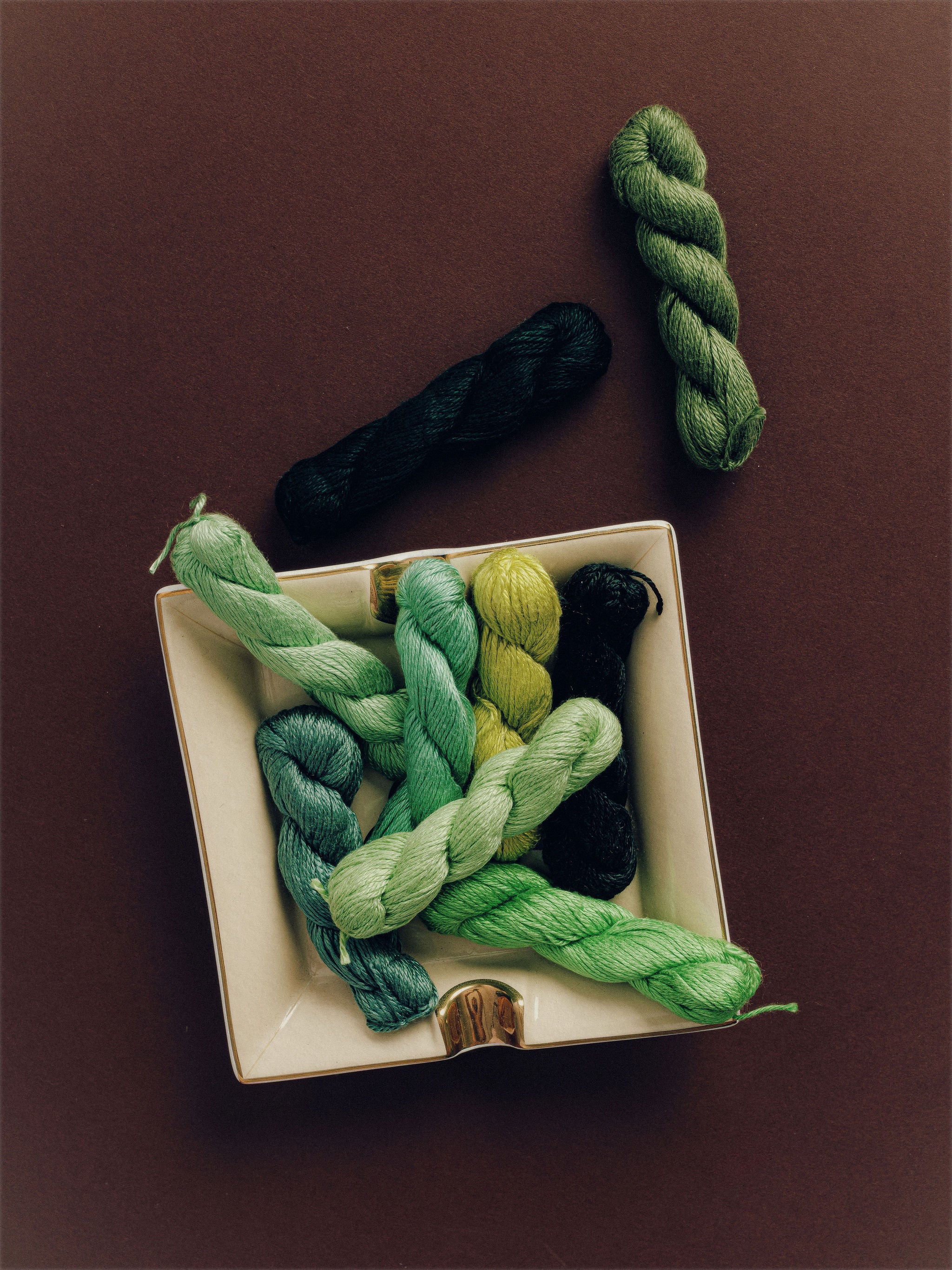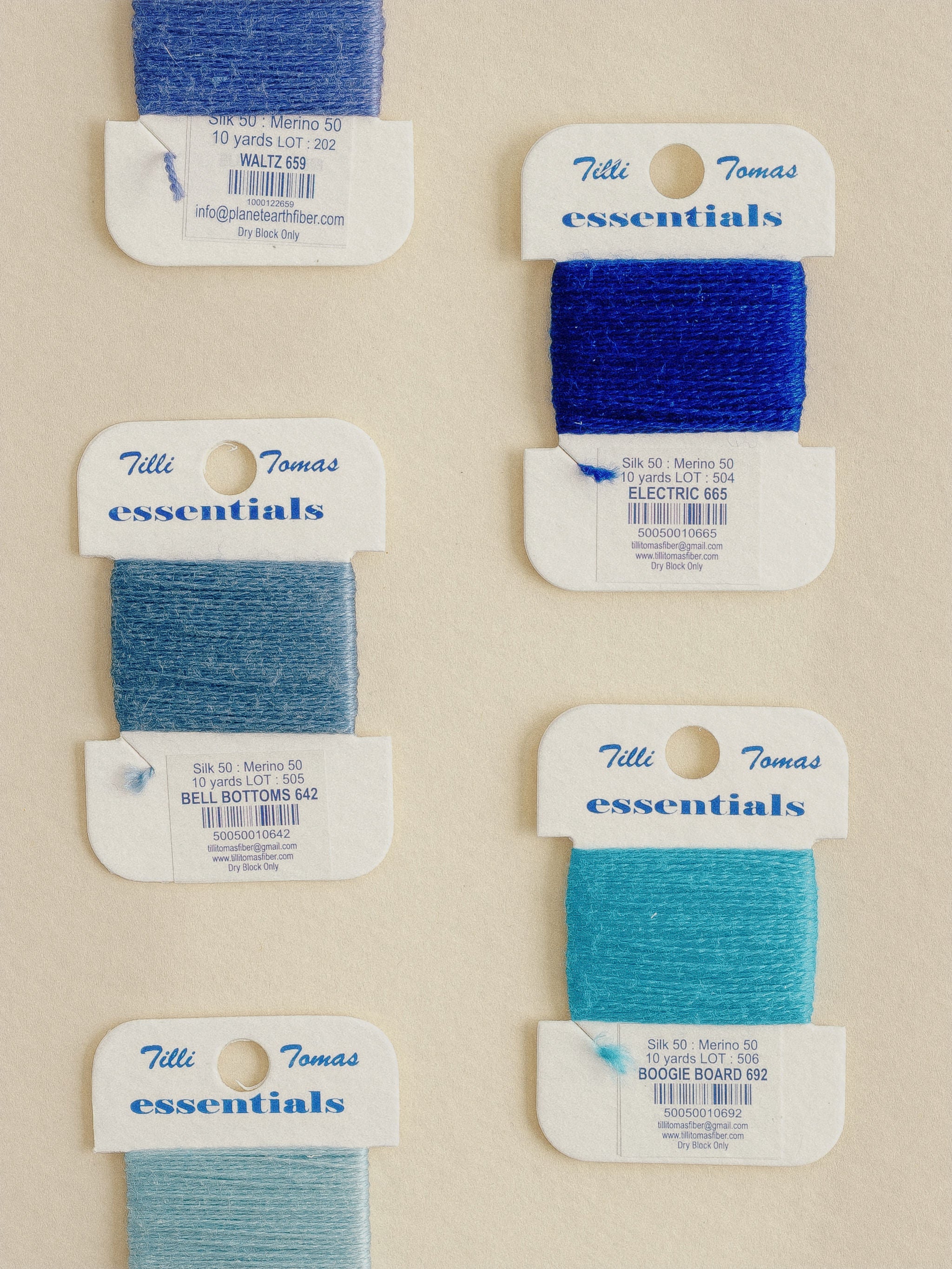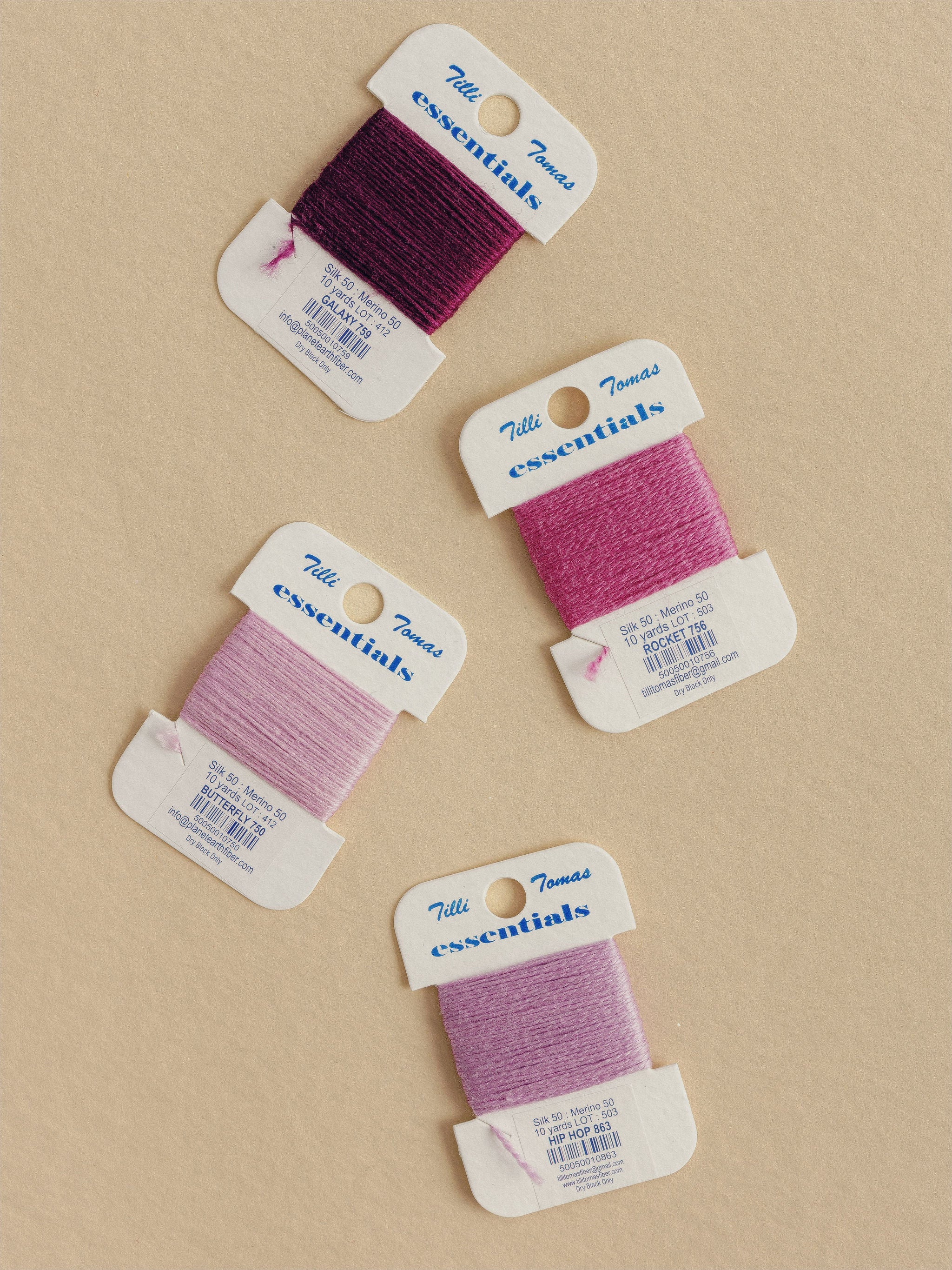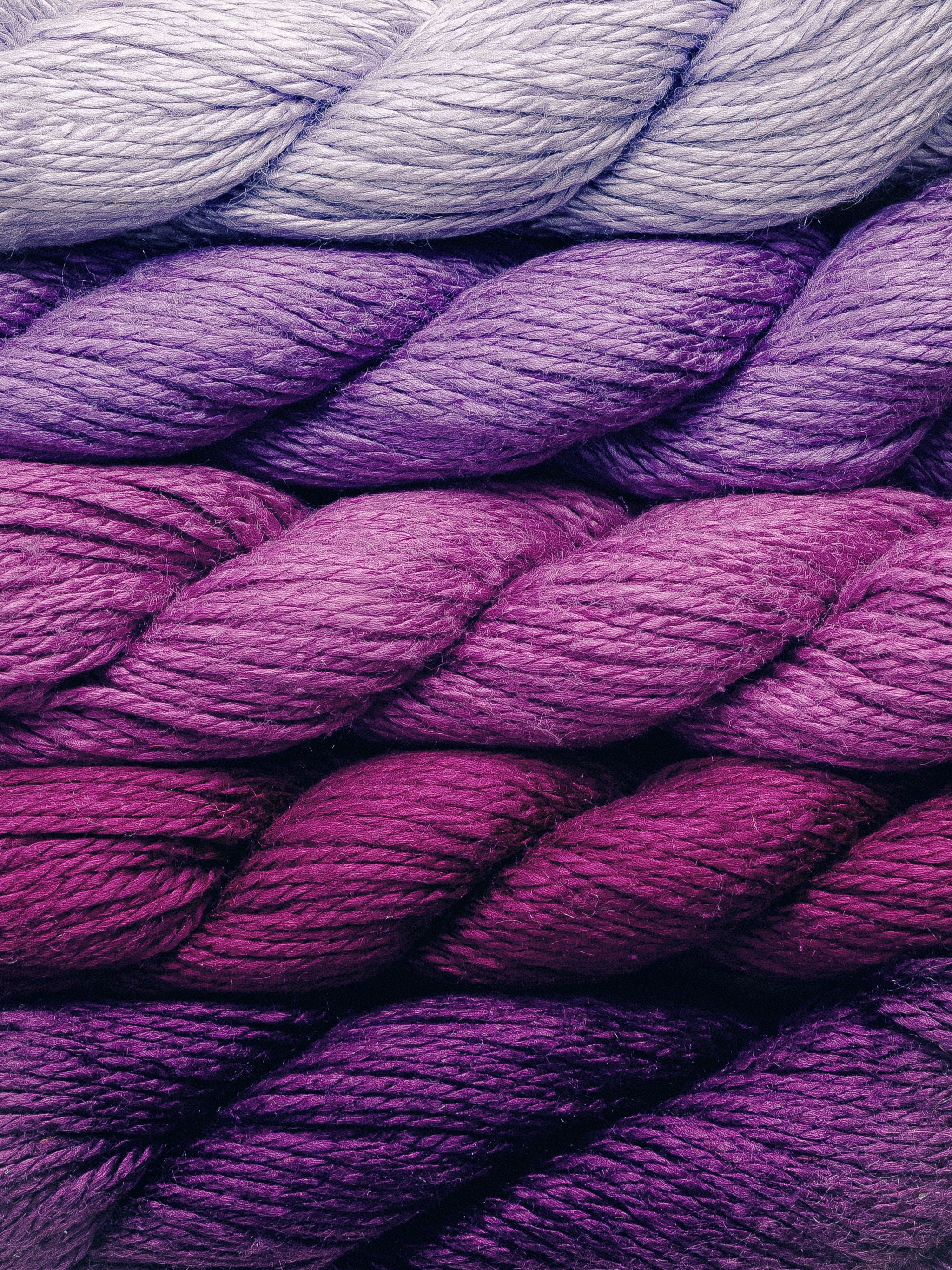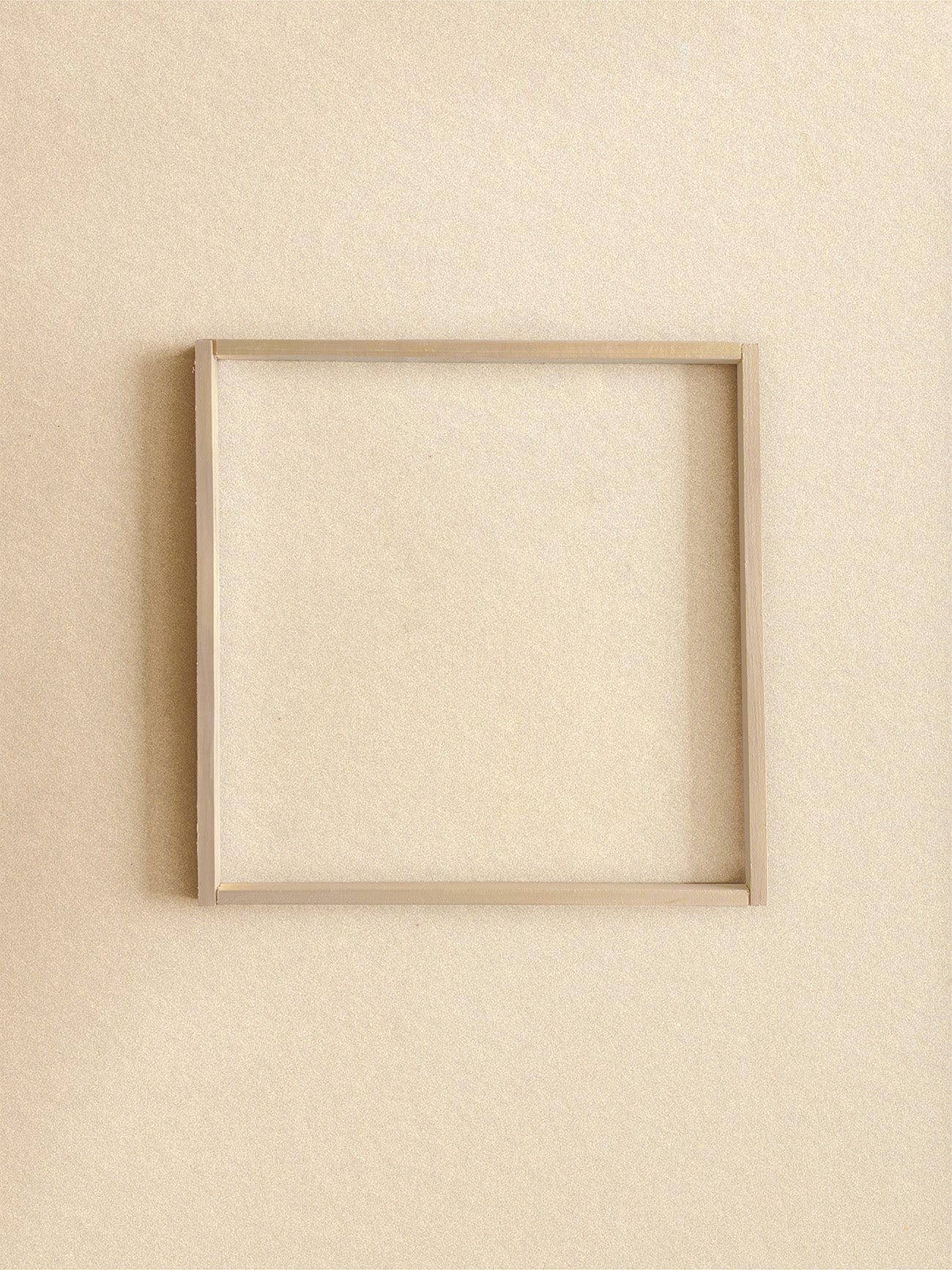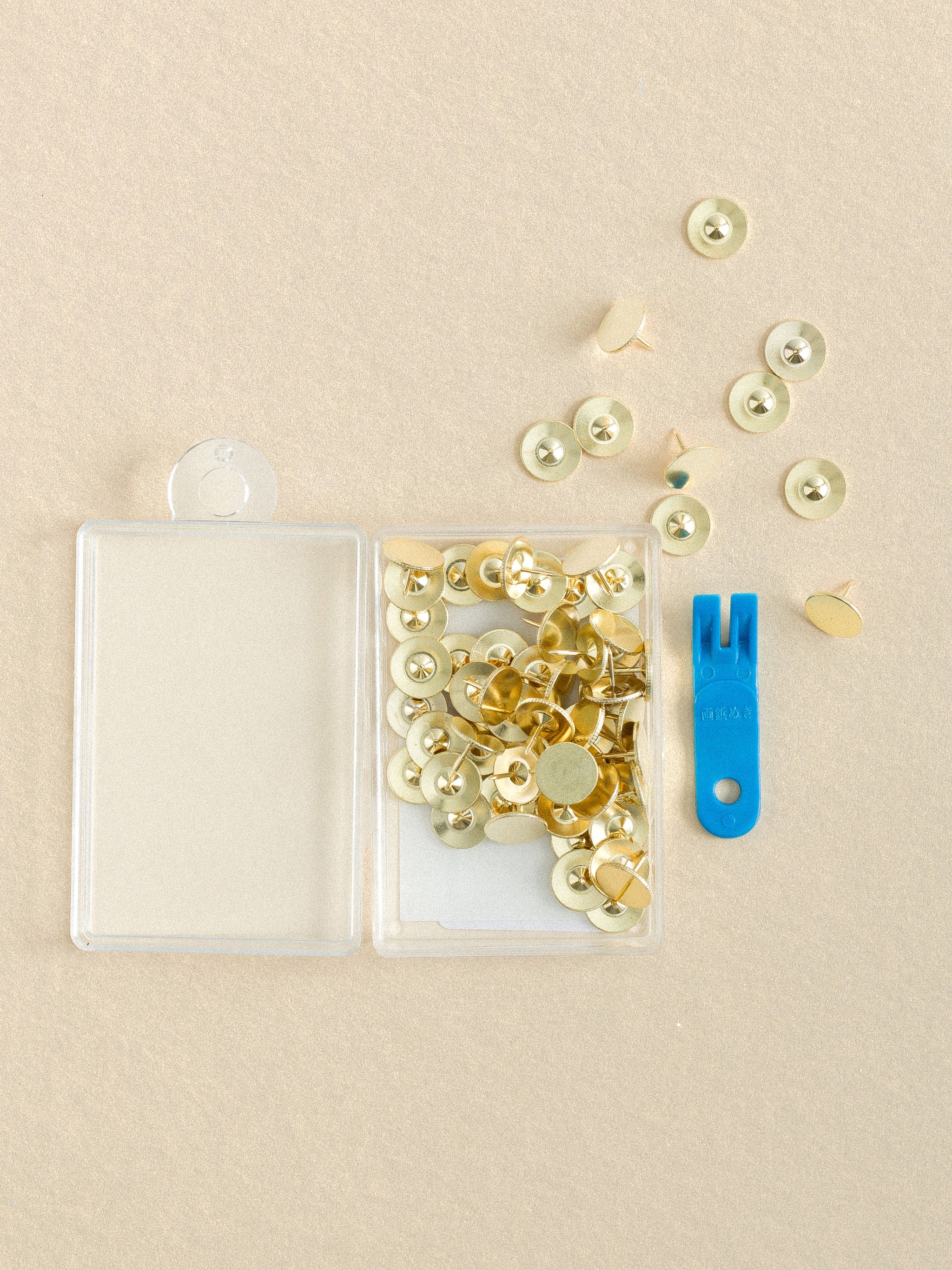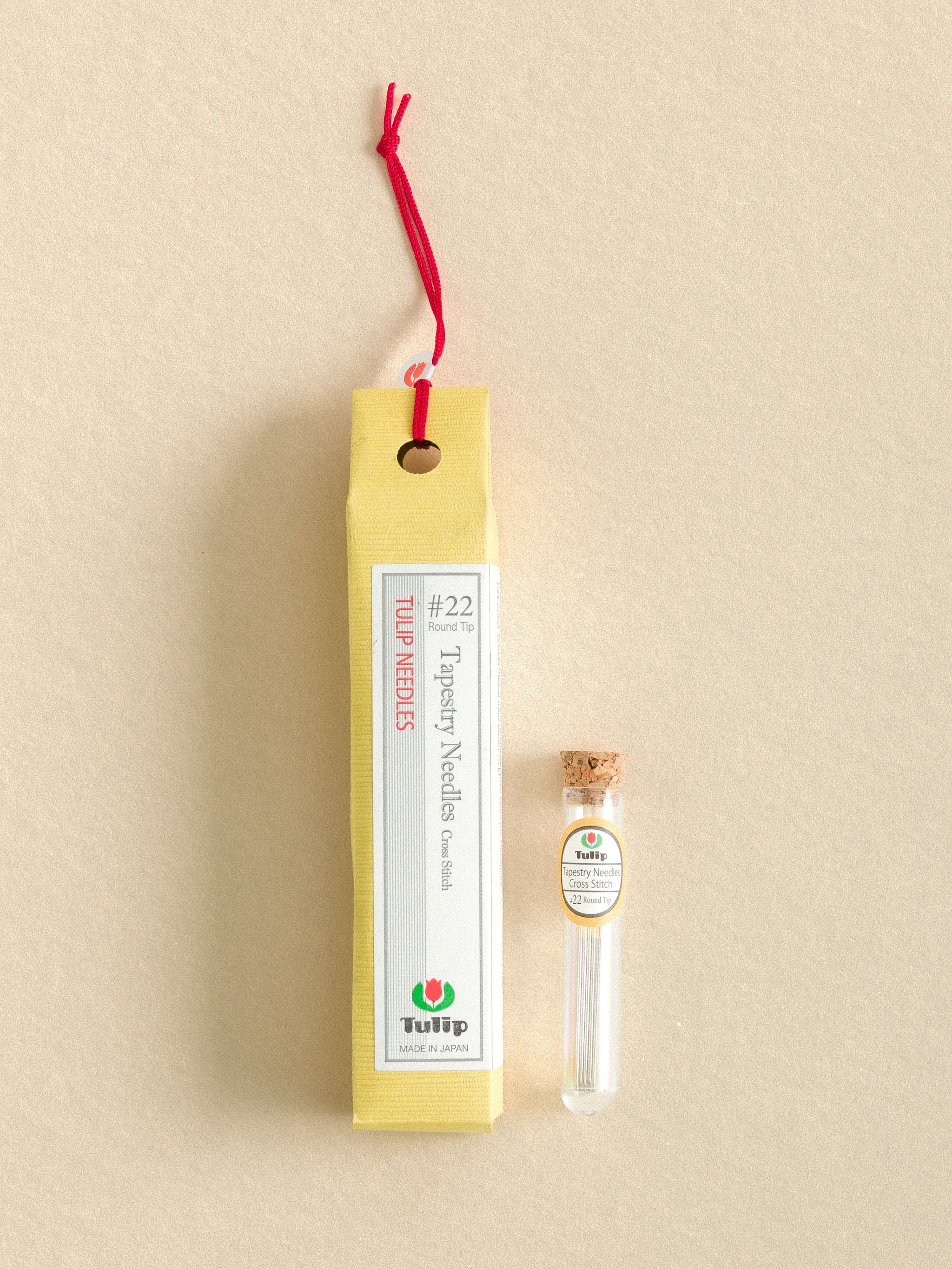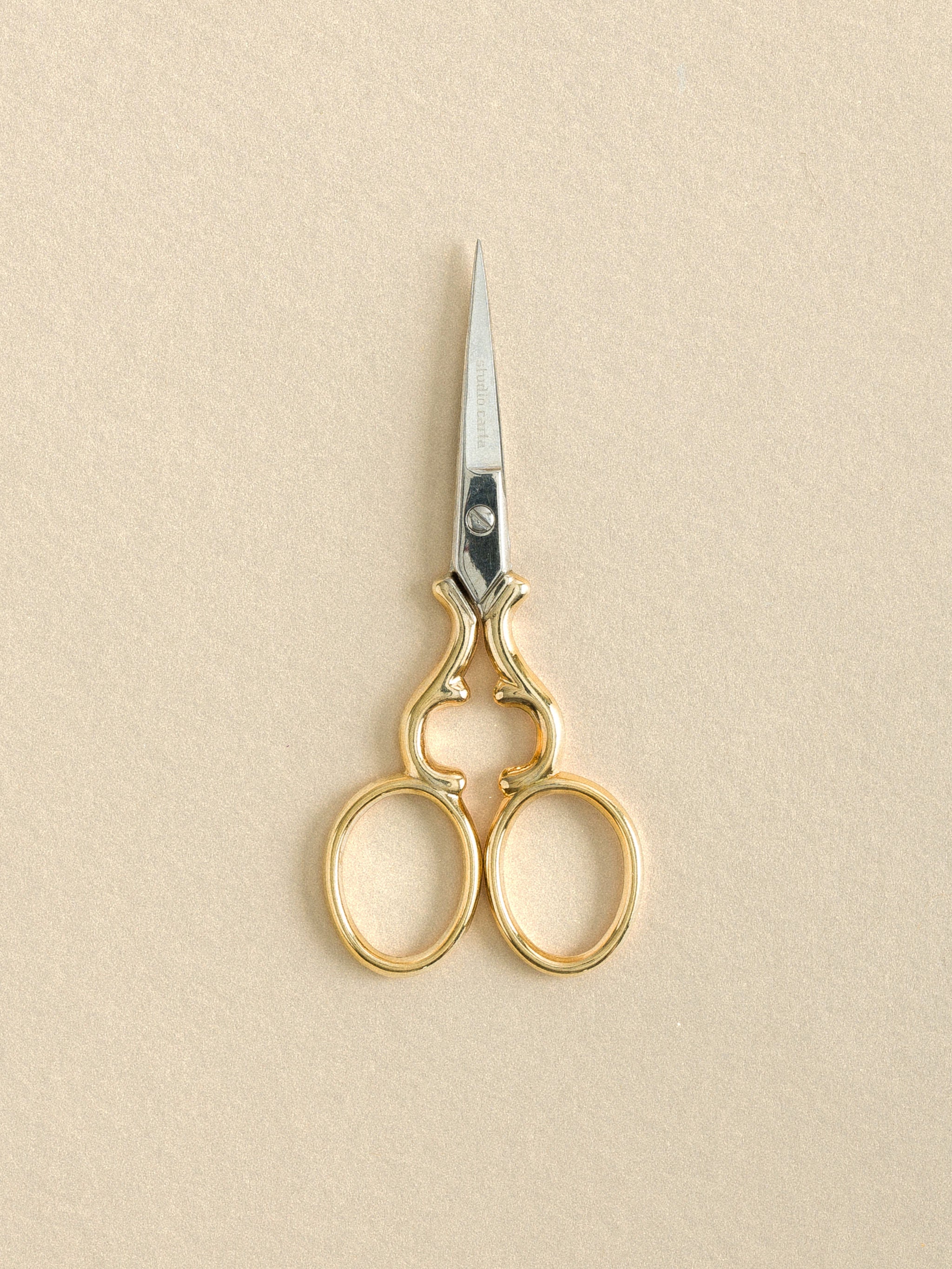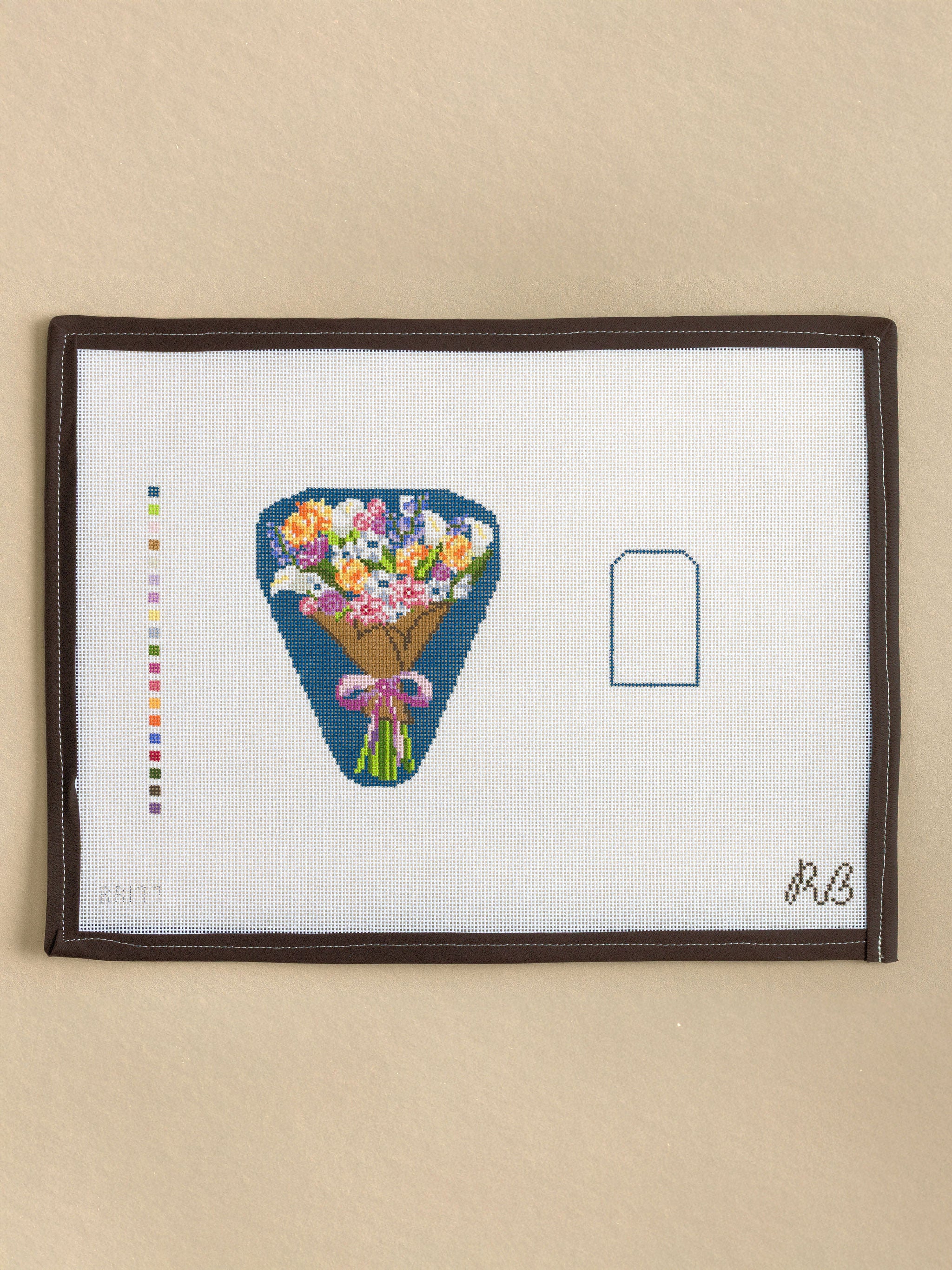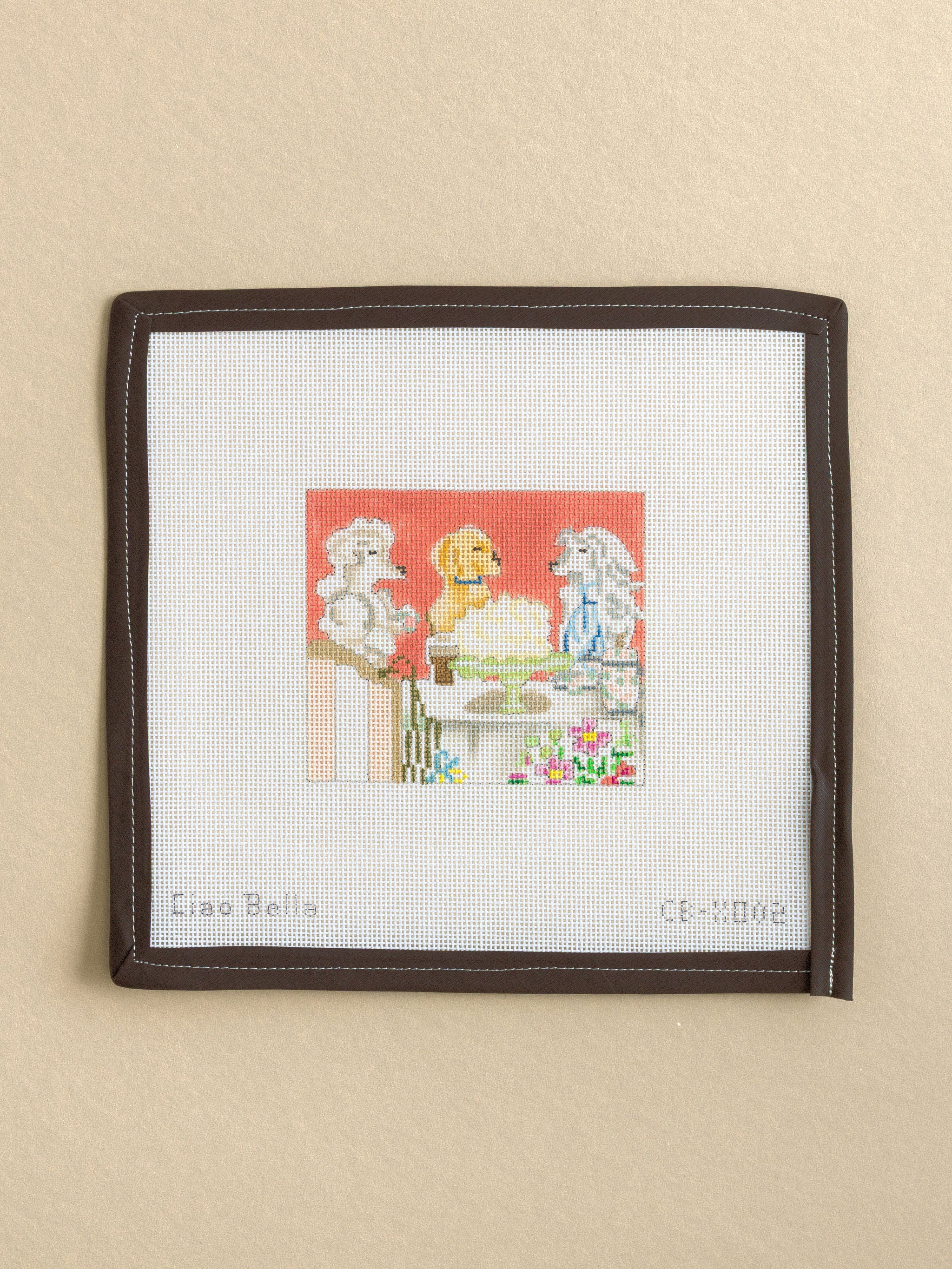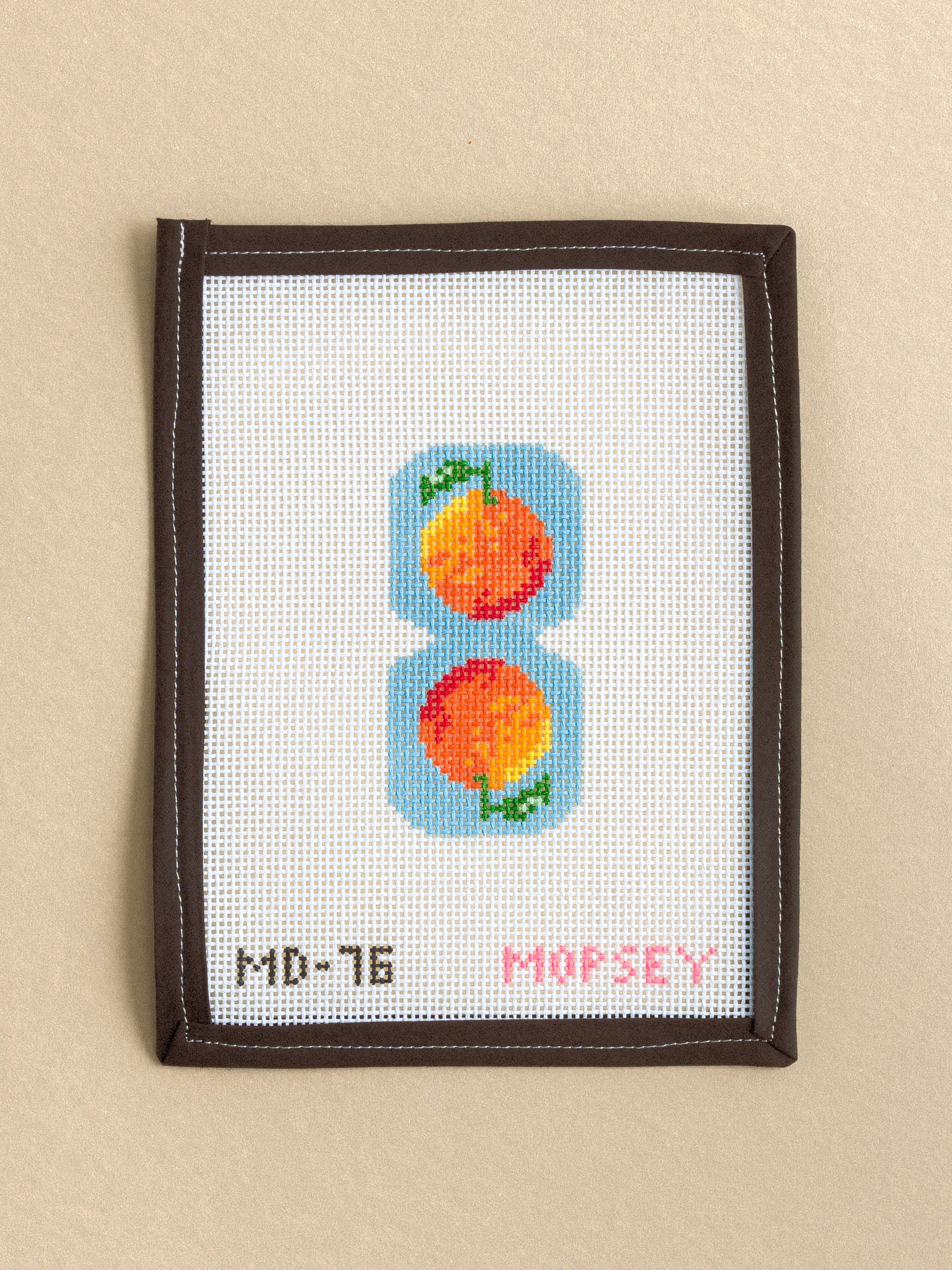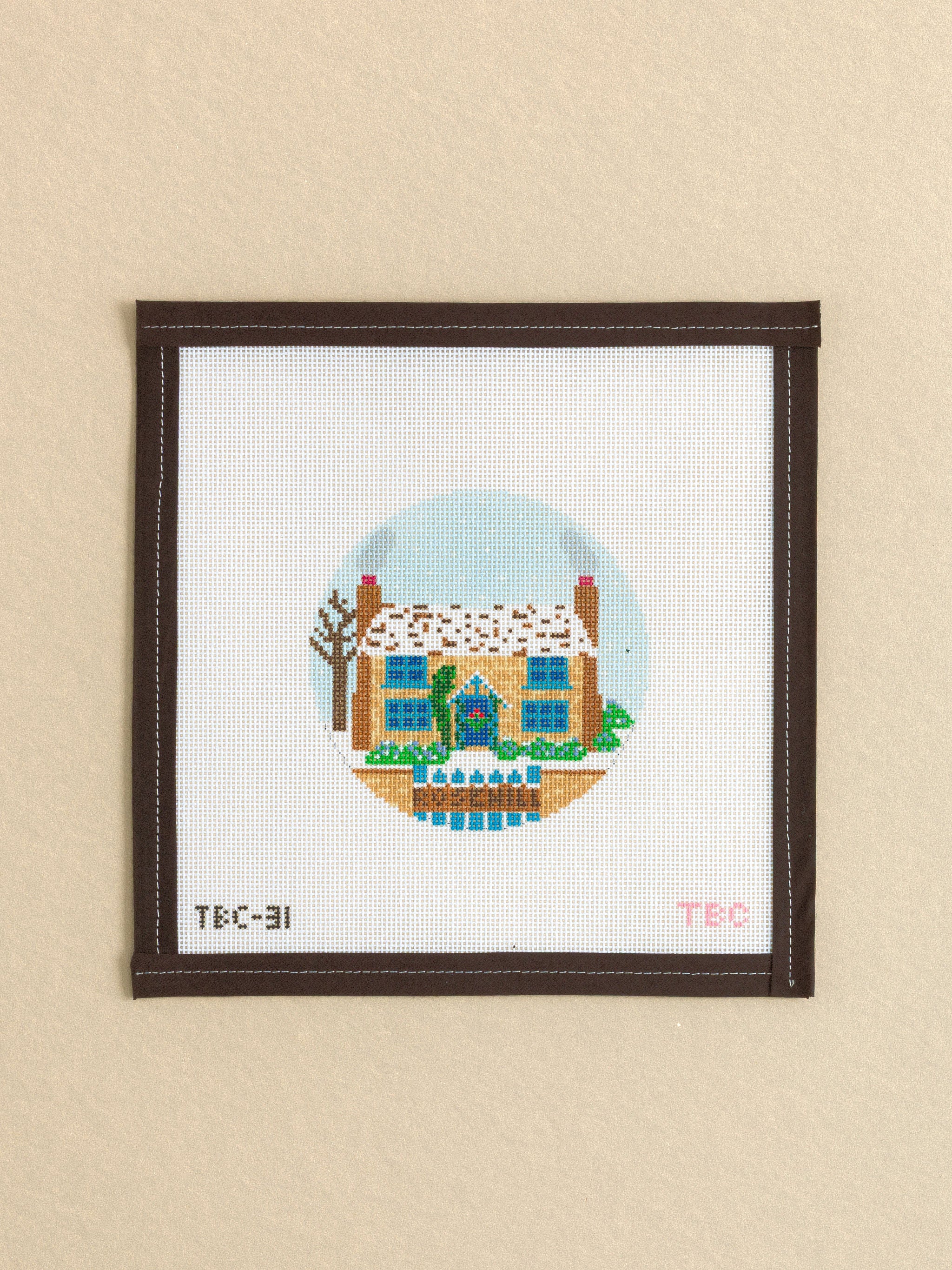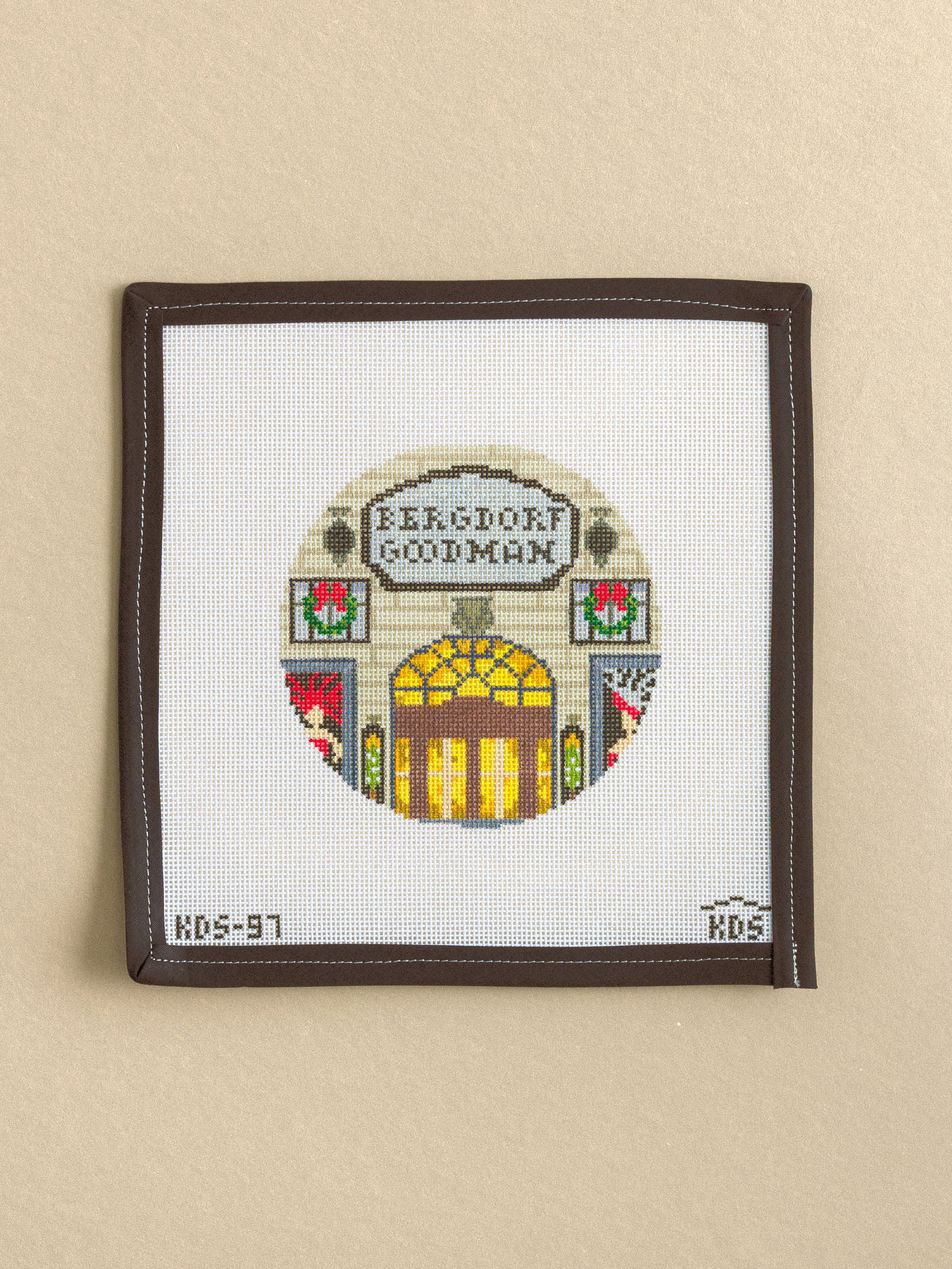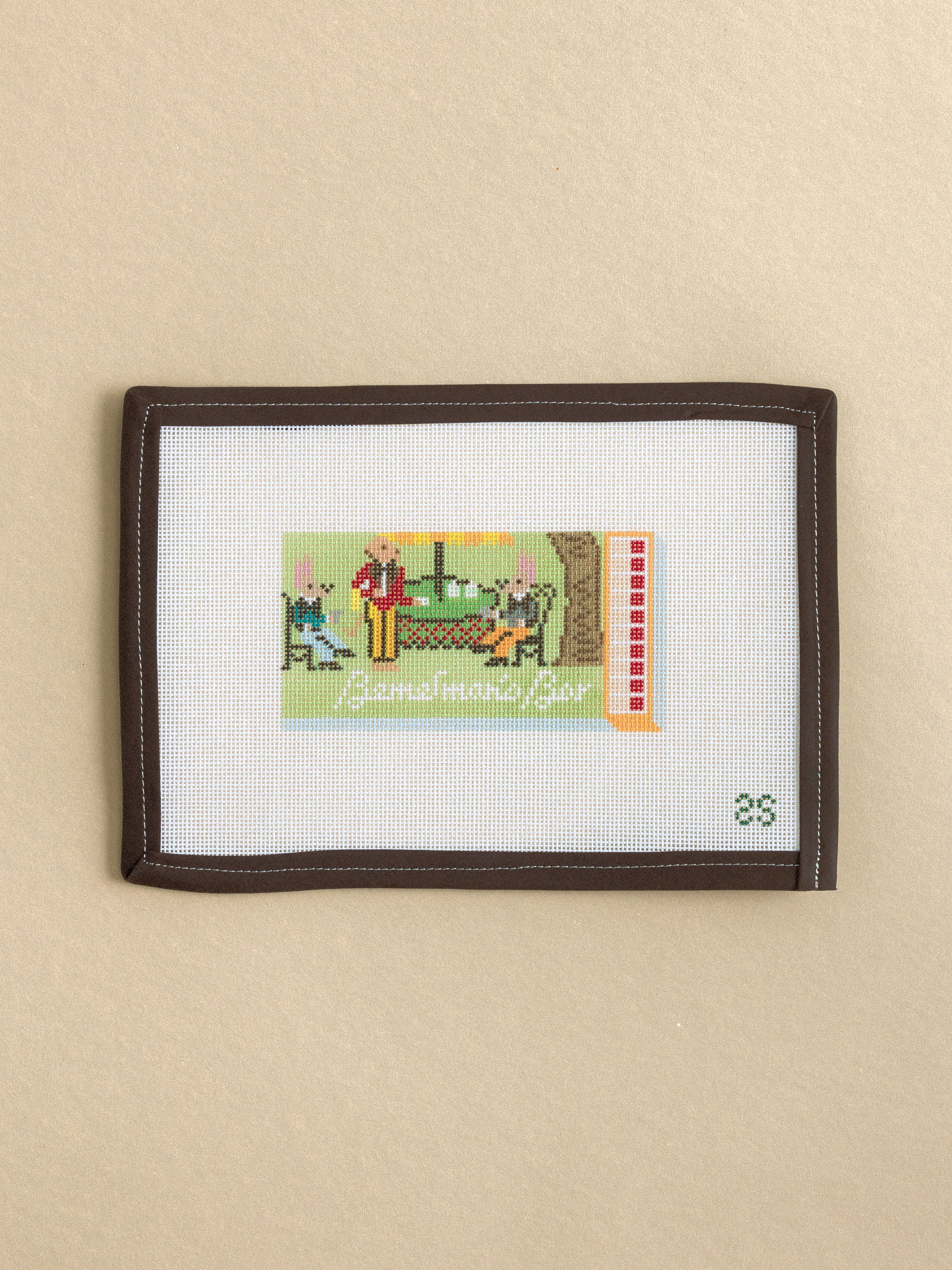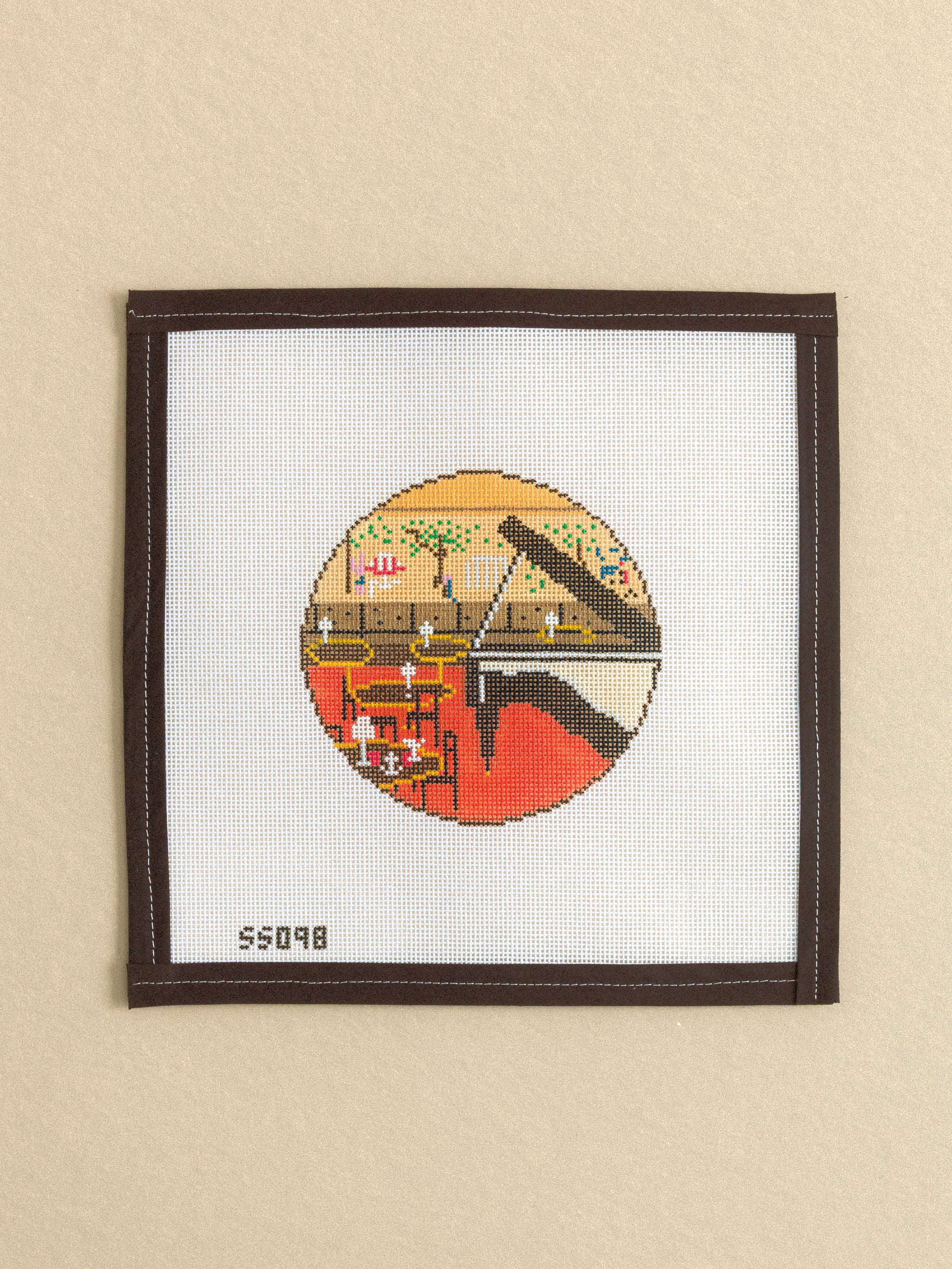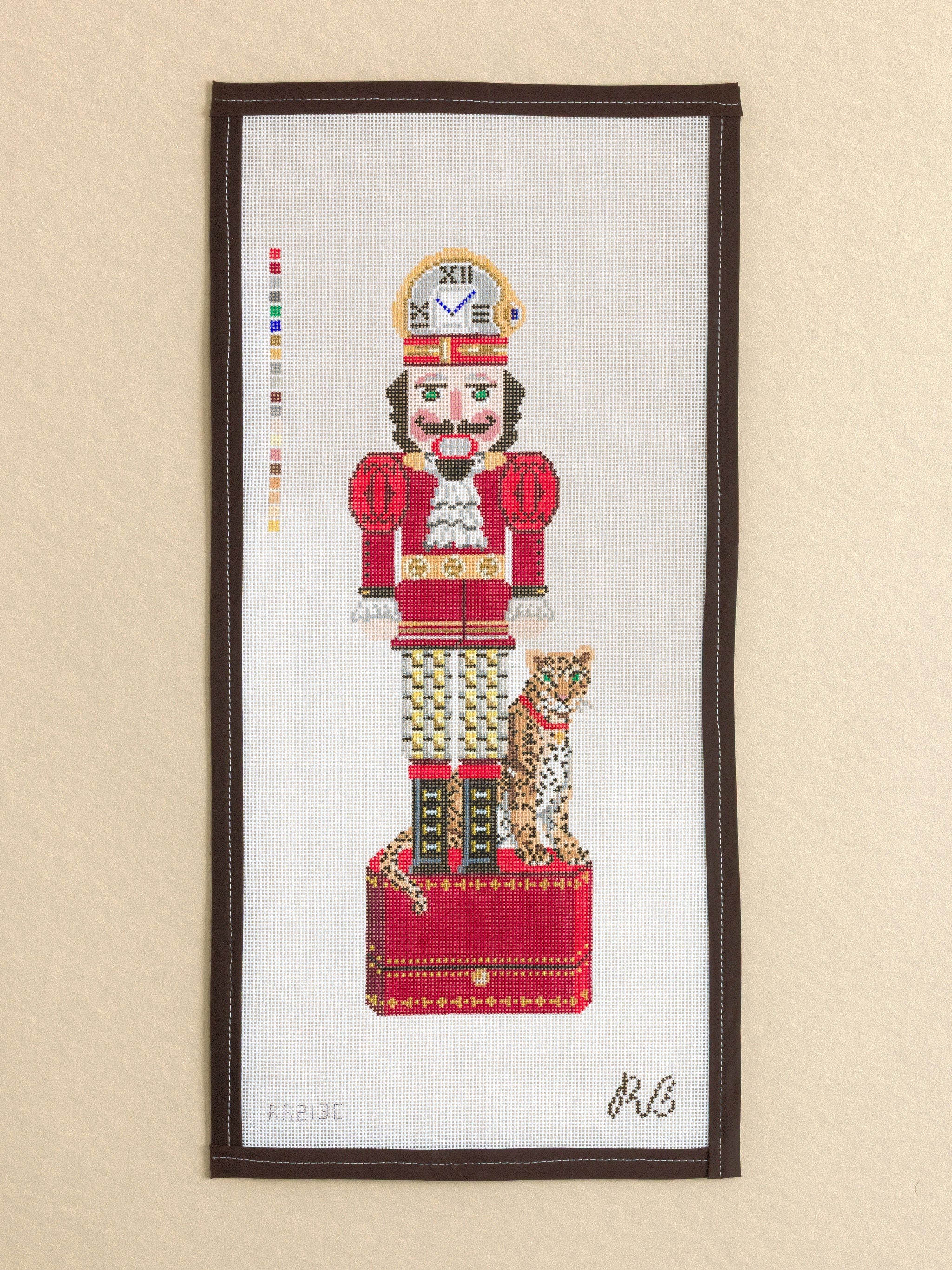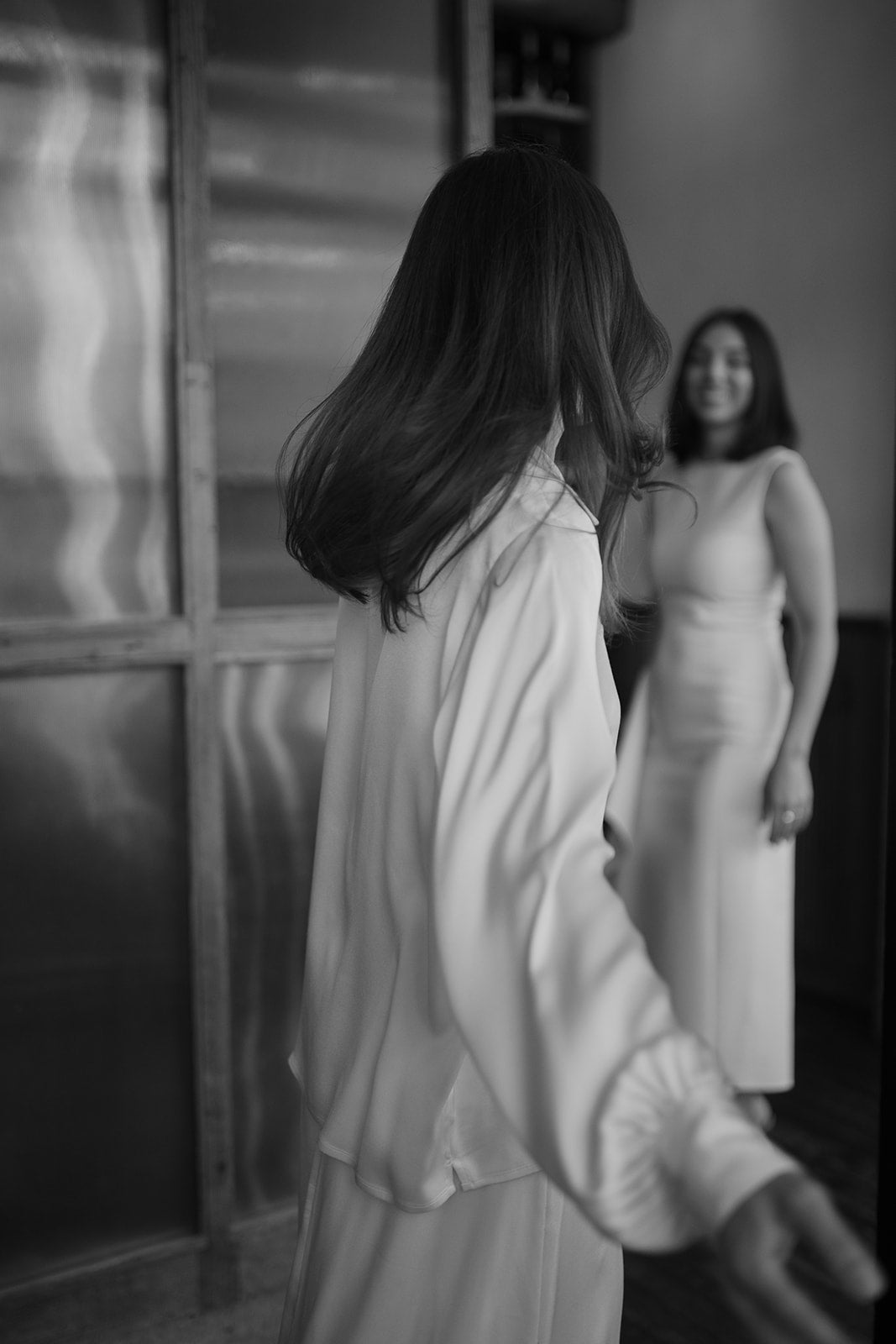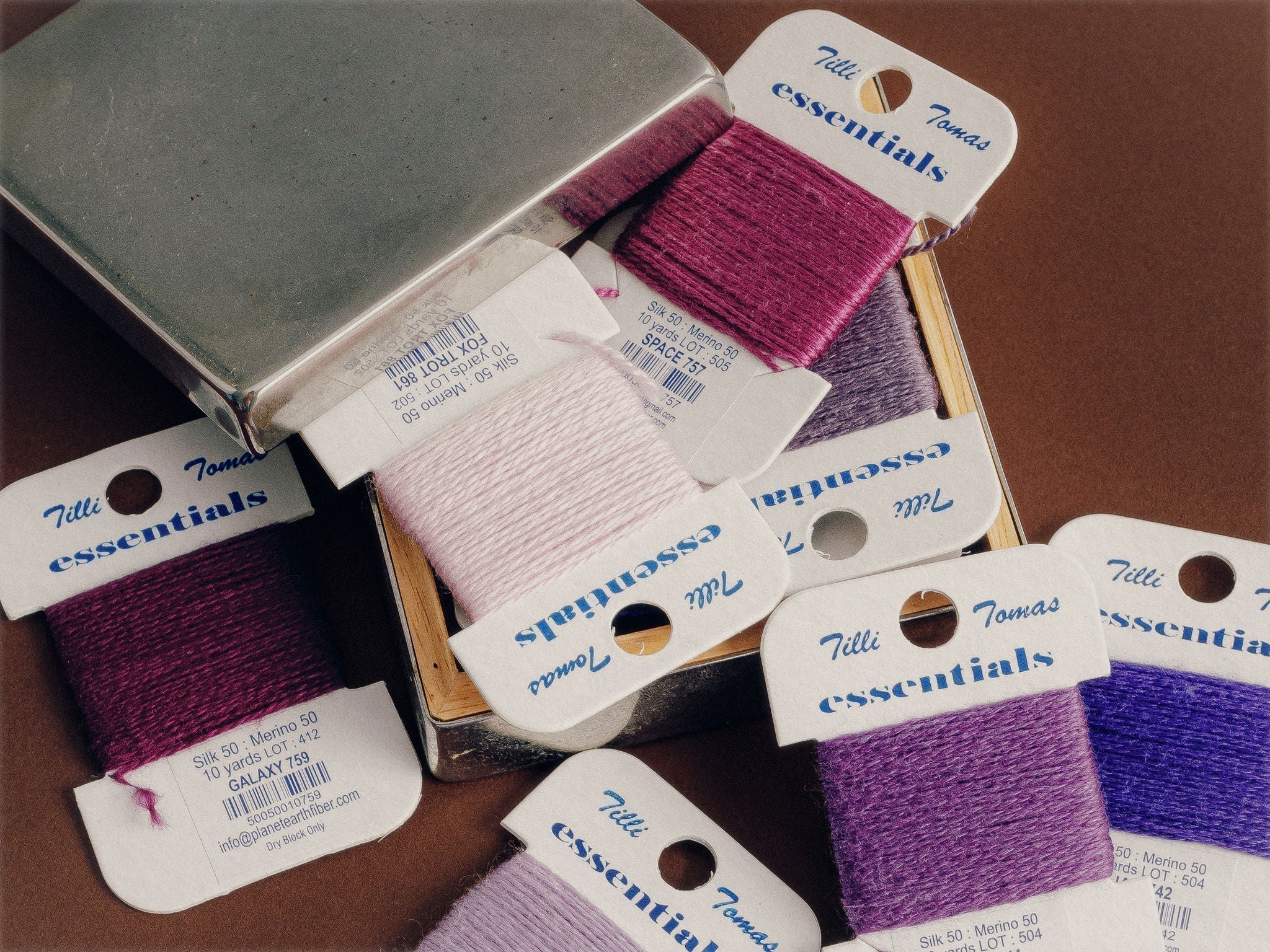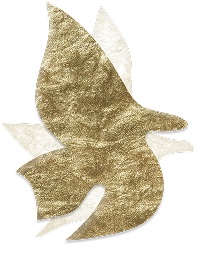Tent Stitch
The Tent stitch is the foundation of most needlepoint — a single diagonal stitch that covers one intersection of the canvas. It’s quick to work, easy to control, and forms the building block for stitches like half-cross, continental, and basketweave.
Take a moment to look at your canvas: it’s a grid of vertical and horizontal threads that cross to form tiny intersections. Each stitch will cover one intersection on the diagonal.
1. Bring your needle up through the lower left hole.
2. Take it down through the upper right hole.
3. Continue, keeping your stitches consistent and all slanting in the same direction.
Tent stitch uses less thread than continental and produces lighter coverage on the back of your canvas. It’s a good option for small motifs, lettering, or areas with frequent color changes where minimal buildup underneath helps the surface stay smooth.

Half-Cross Stitch
Half-cross stitch looks identical to tent stitch on the front — the difference is how the thread travels on the back. Instead of taking the longer diagonal route, half-cross takes the shortest path from one stitch to the next.
1. Bring your needle up through the lower left hole.
2. Take it down through the upper right hole.
3. Move diagonally down one hole and repeat.
This shortcut makes half-cross quicker to work and more economical with thread, but it also produces lighter tension and less coverage on the back of the canvas. Because it uses less thread, it’s useful when stitching over painted areas that don’t need full opacity or when working with thicker fibers.

Continental Stitch
Continental is one of the most common stitches in needlepoint and a great place to start. It’s easy to learn, creates smooth coverage, and works well for small areas or detailed designs. It’s stitched in the same motion as a half-cross but uses slightly more thread, giving medium coverage on the back of the canvas.
Take a look at your canvas — it’s a grid of vertical and horizontal threads that form small intersections. Each stitch will cover one intersection on a diagonal.
1. Bring your needle up through the lower left hole of the intersection.
2. Insert it down through the upper right hole.
3. Continue this motion to create a row of diagonal stitches that all lean from bottom left to top right.
You can work in horizontal rows (left to right) or vertical columns (top to bottom):
Left to right: Up through the lower left hole, down through the upper right.
Right to left: Up through the lower right hole, down through the upper left.
The key is to keep every front stitch "slanted" in the same direction. On the back of the canvas, your thread travels the long way to reach the next stitch — unlike half-cross stitch, which takes the shorter path. This longer travel gives continental its denser, more durable coverage.
From the front, stitches appear small and even. From the back, you’ll see long diagonal lines running in one direction. This makes continental stable and precise, though on large filled areas it can cause warping, which is one of several reasons why basketweave is preferred for larger sections.

Basketweave Stitch
Basketweave is the foundation of most needlepoint canvases, not to mention our favorite stitch. It follows the natural weave of the canvas and helps keep your stitches even and your canvas from warping.
Before you start, look closely at your canvas: the mesh is made of vertical and horizontal threads that cross to form tiny intersections. Where the vertical thread rests on top, you’ll find poles. Where the horizontal sits above are steps.
In basketweave, the rhythm is simple: slide down the poles, climb up the steps. Your needle moves in diagonals in rows across the canvas — down through the poles, up through the steps. This creates a dense, even surface that wears beautifully over time.
When your diagonal row moves downward, bring your needle up through a hole under a horizontal thread and down through a hole beside a vertical thread.


